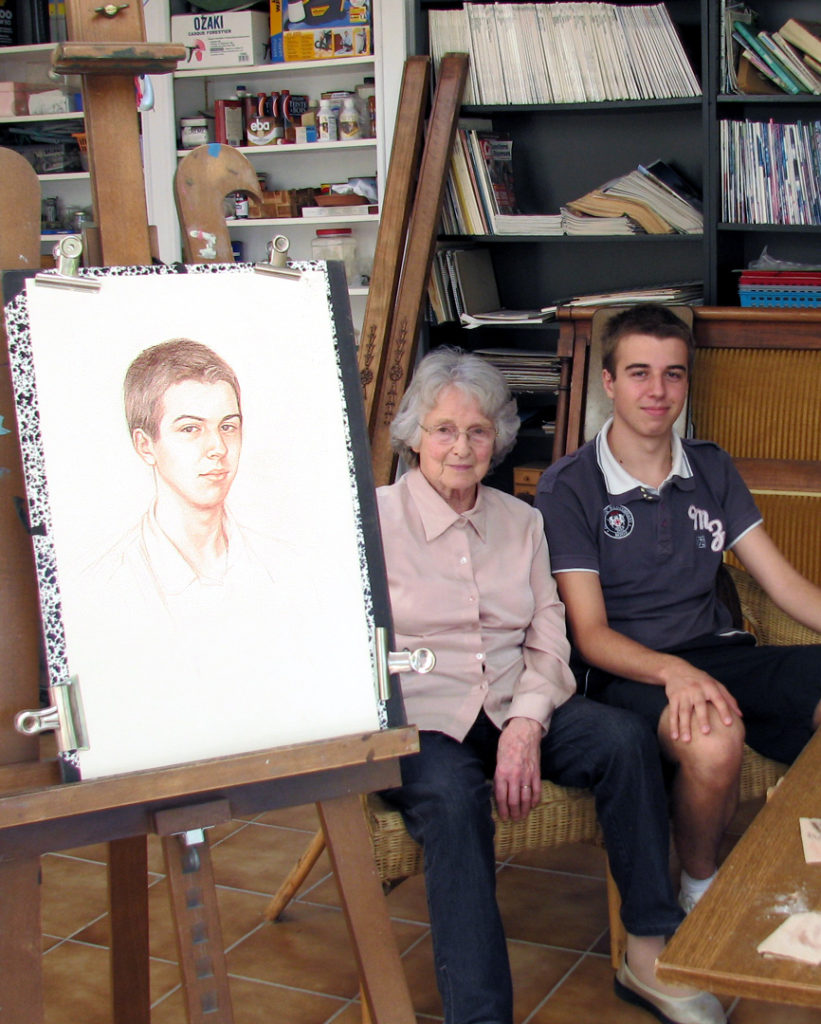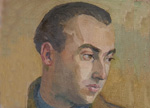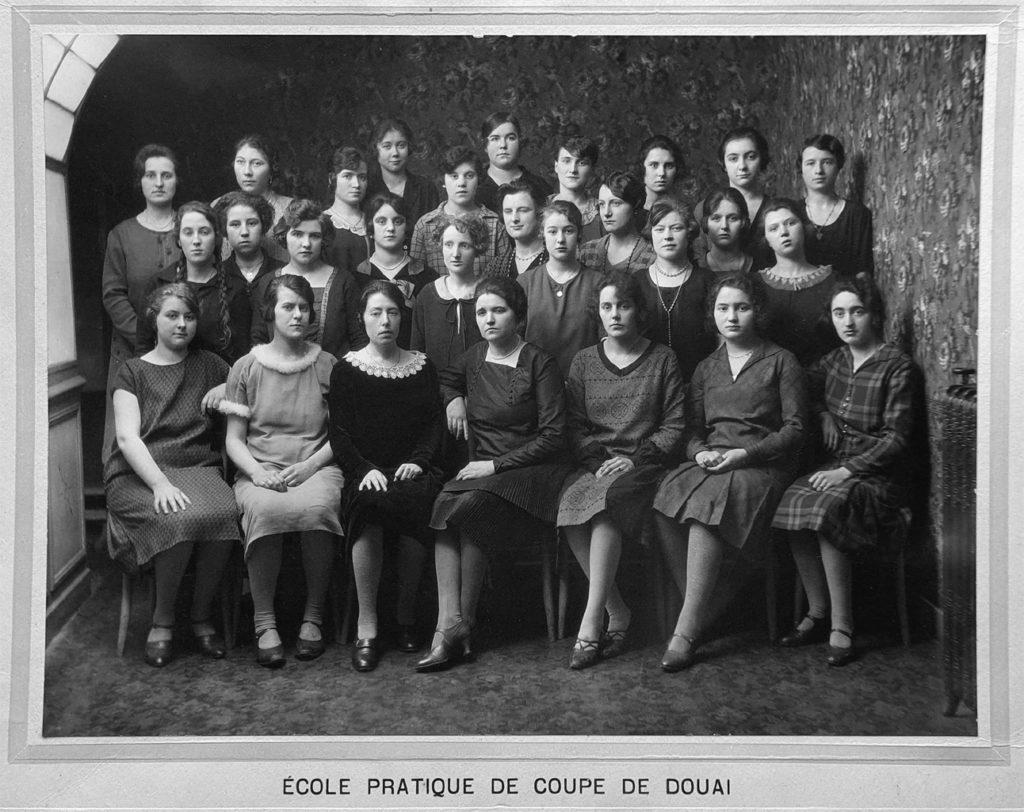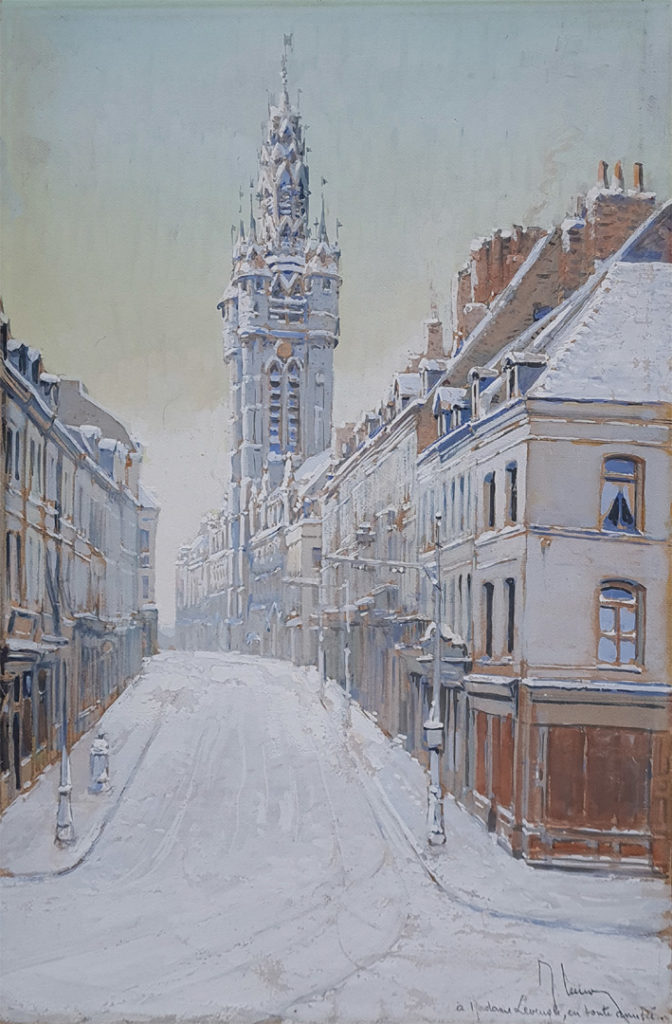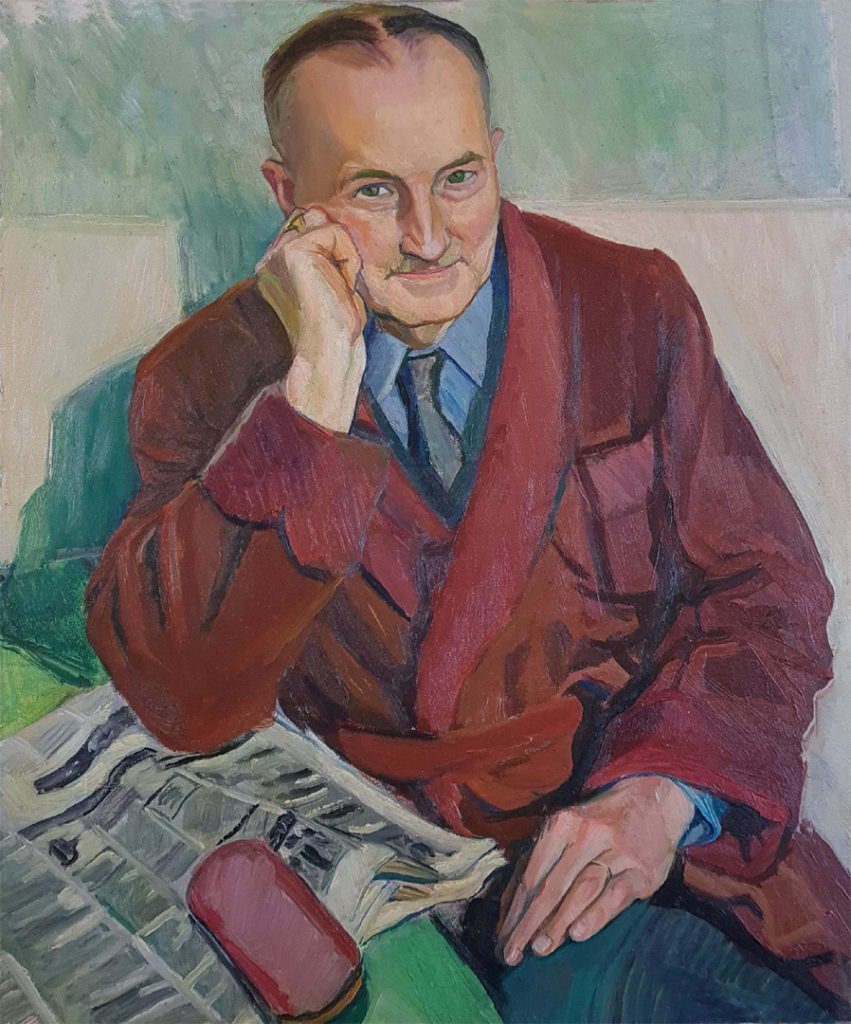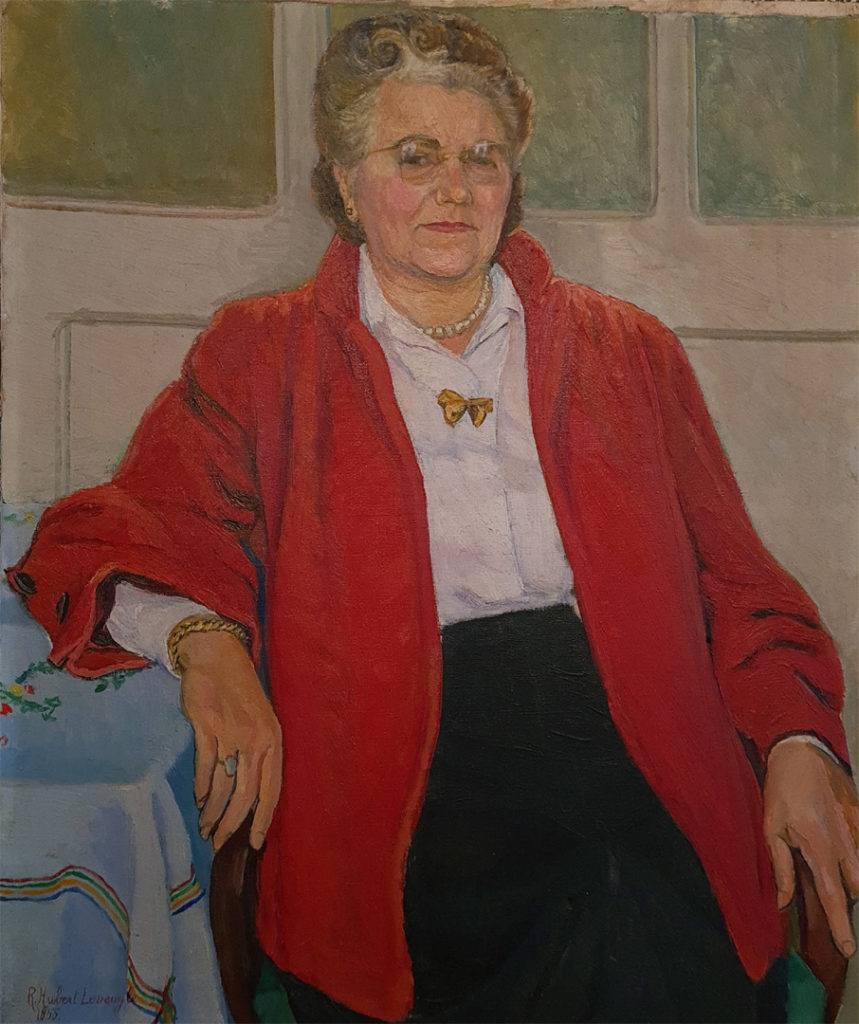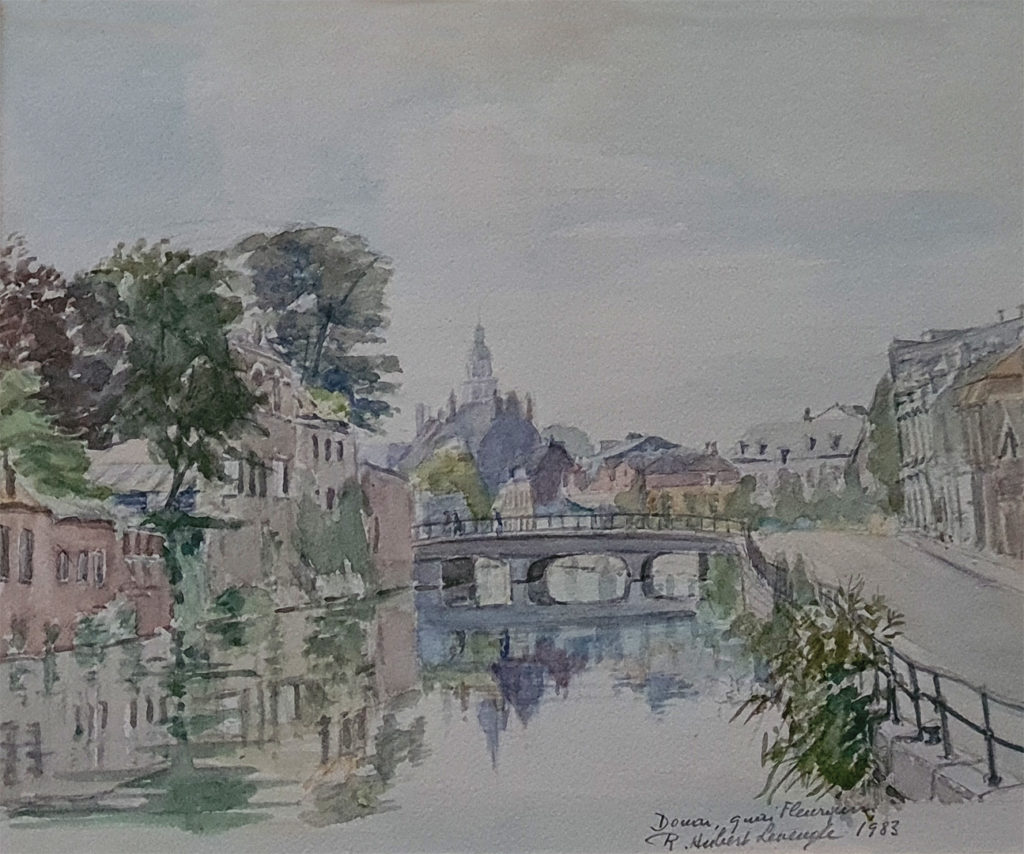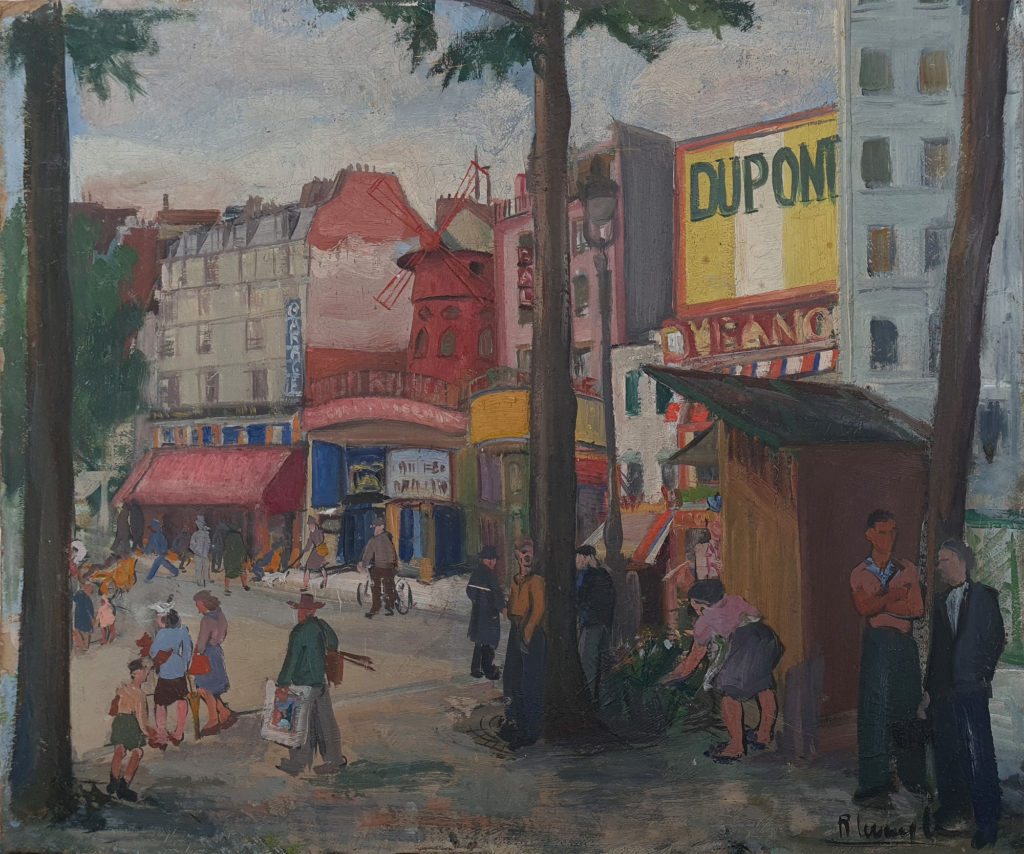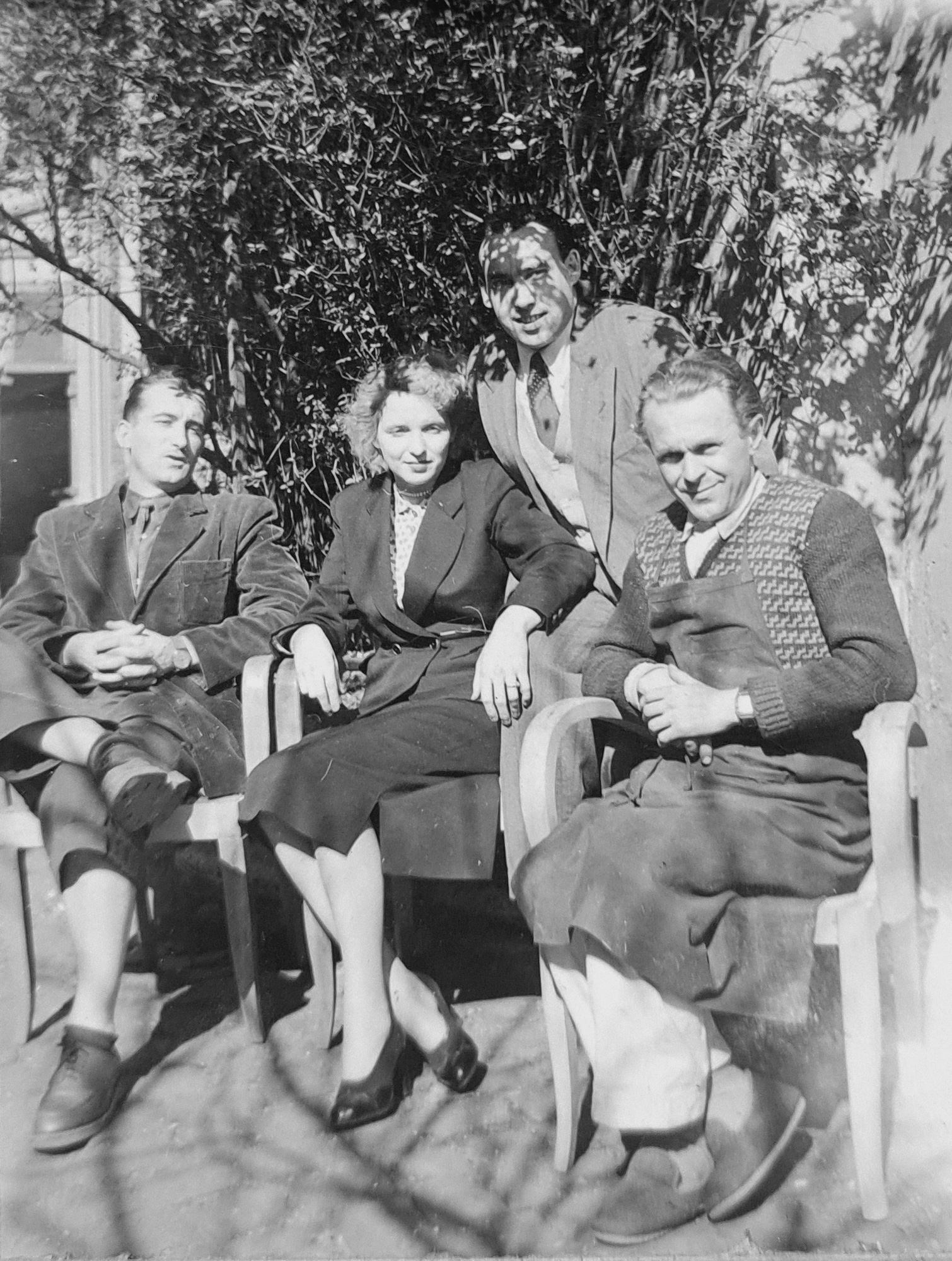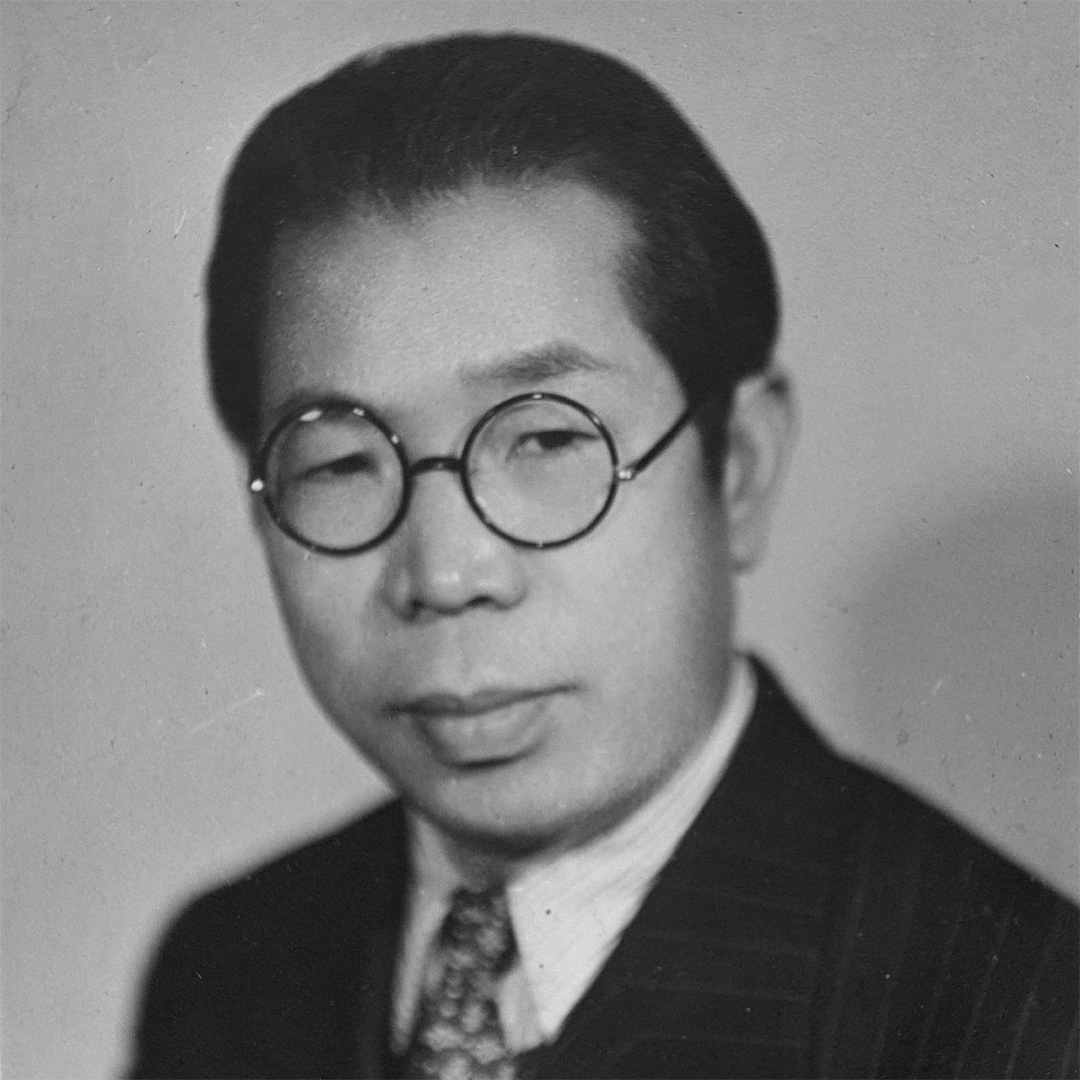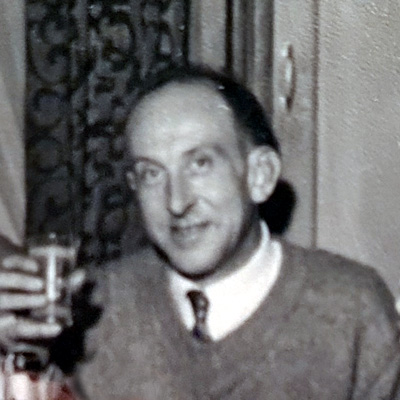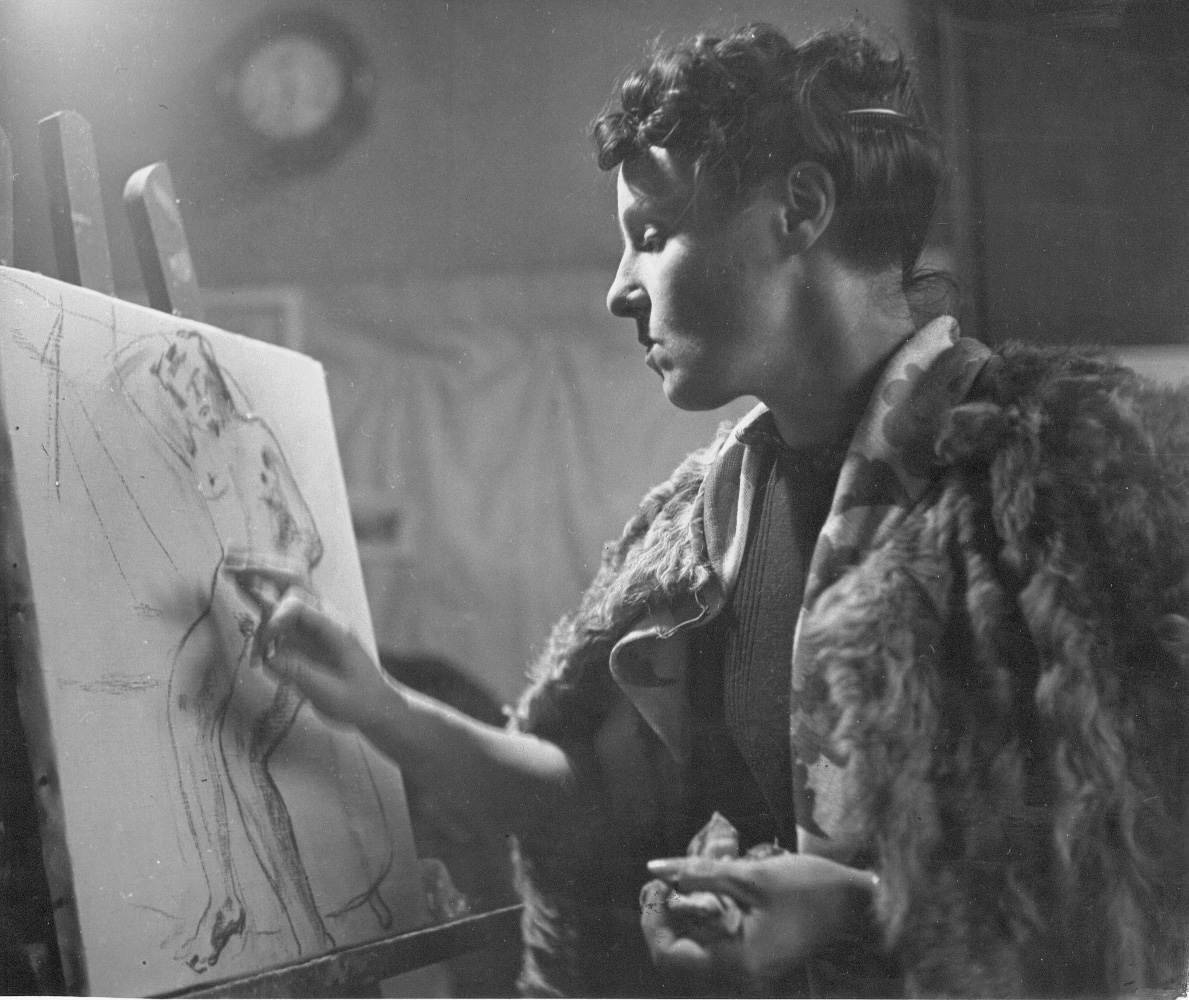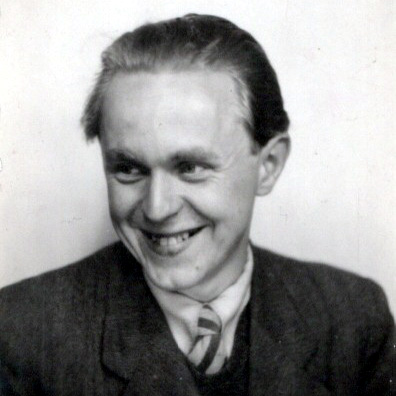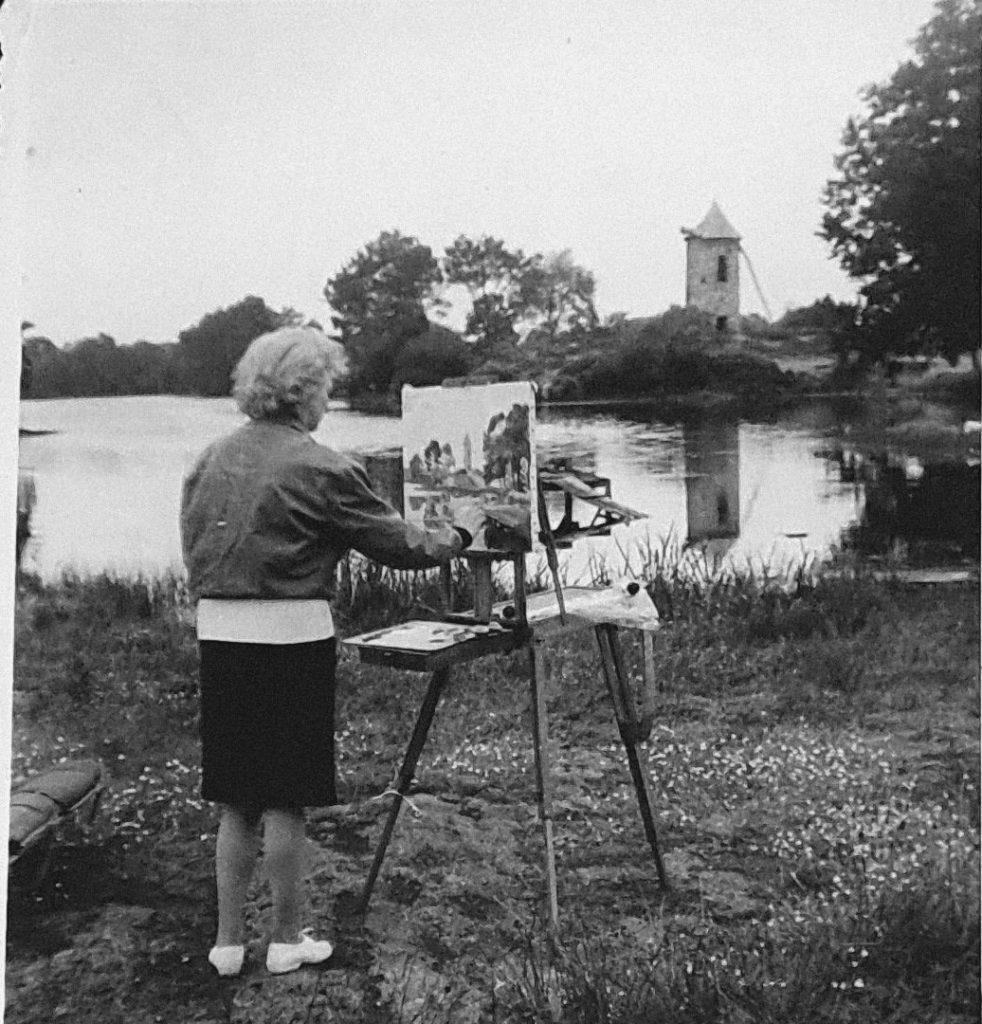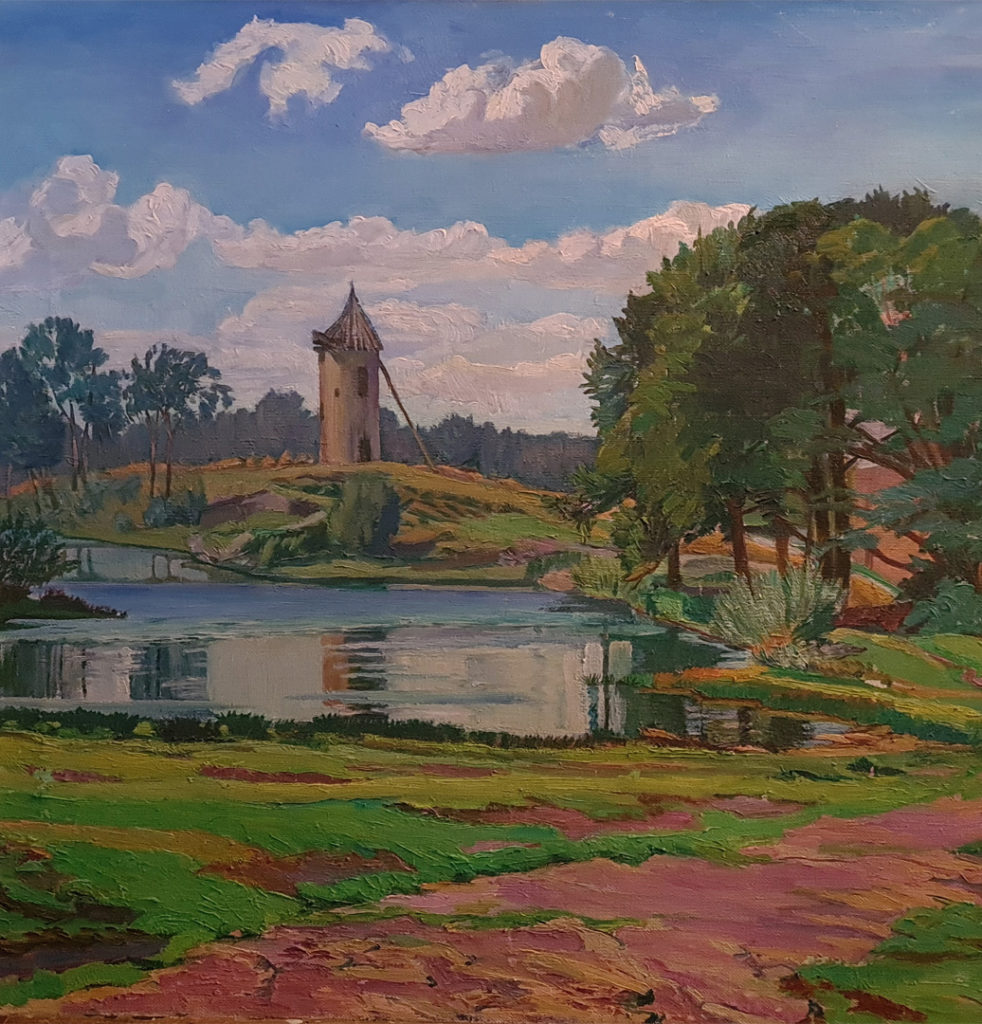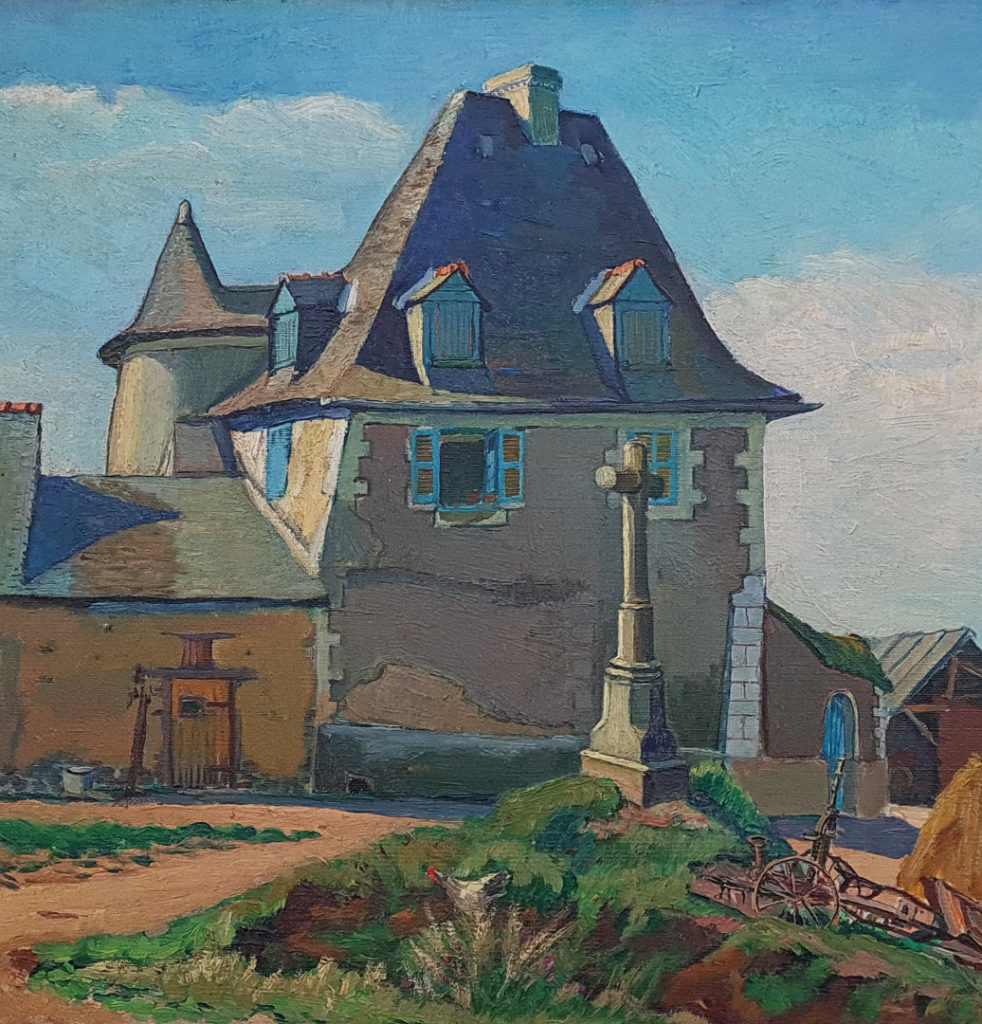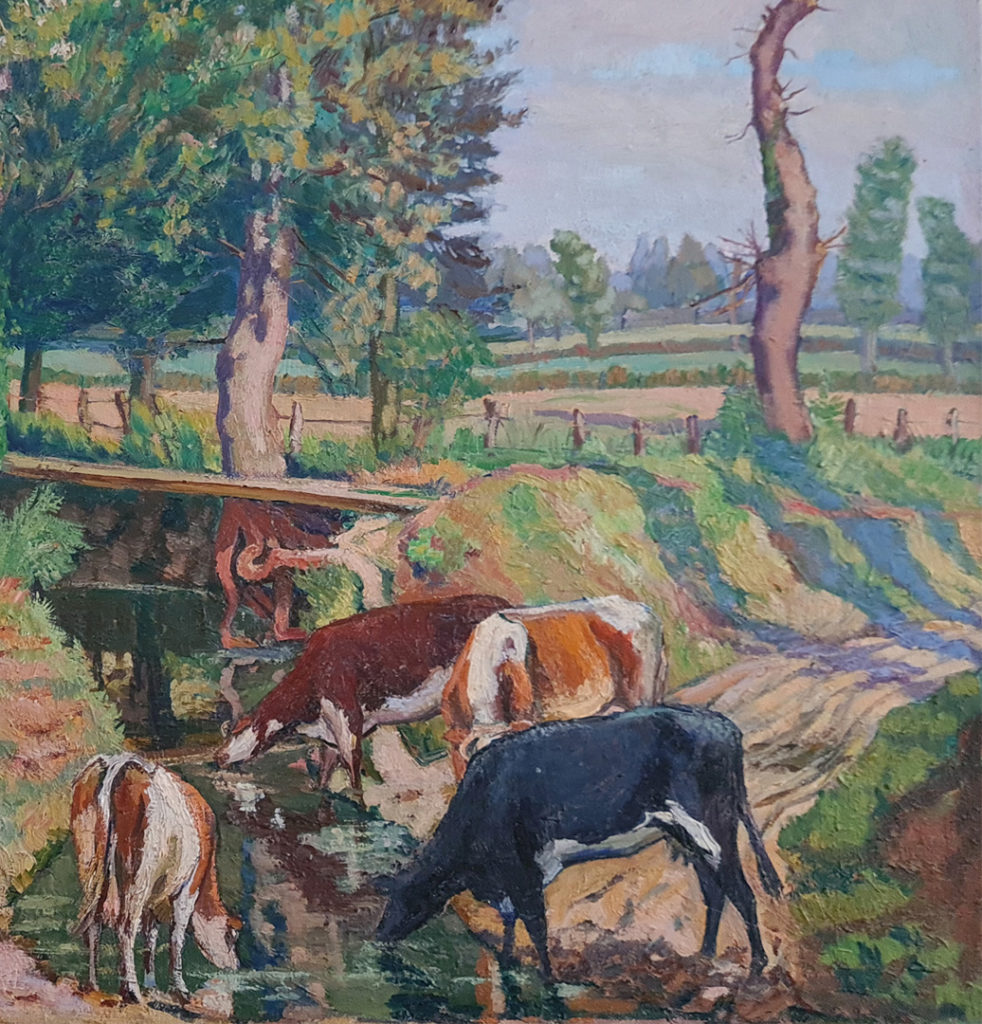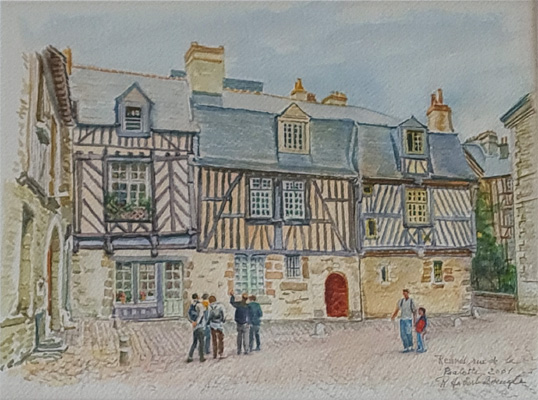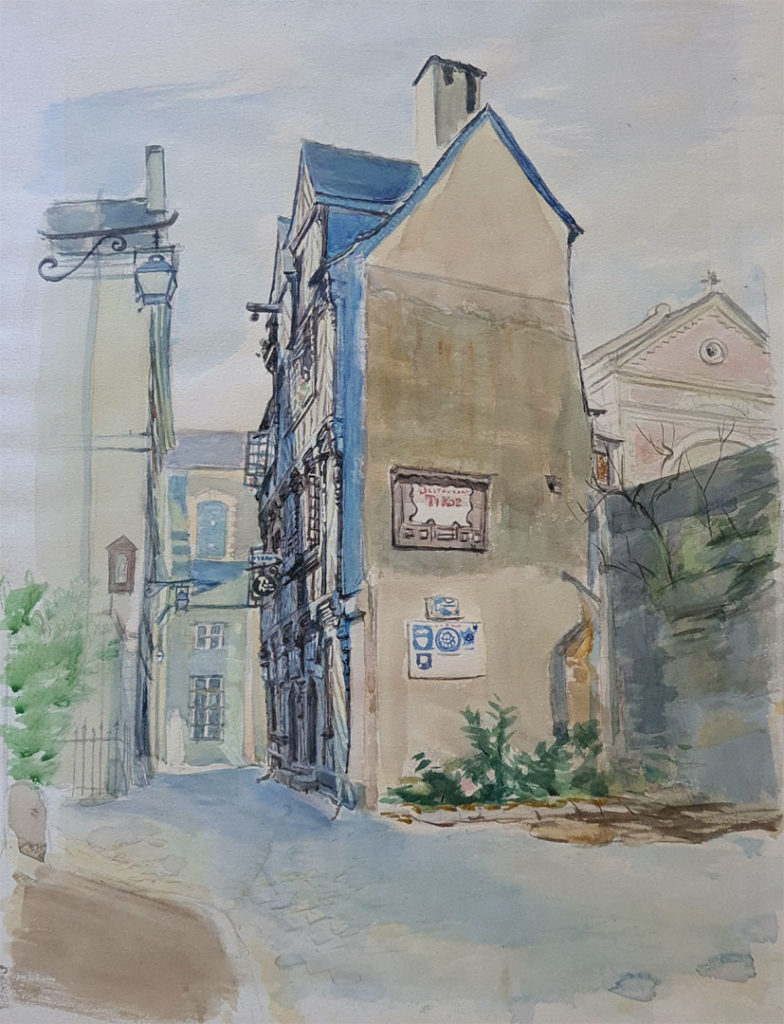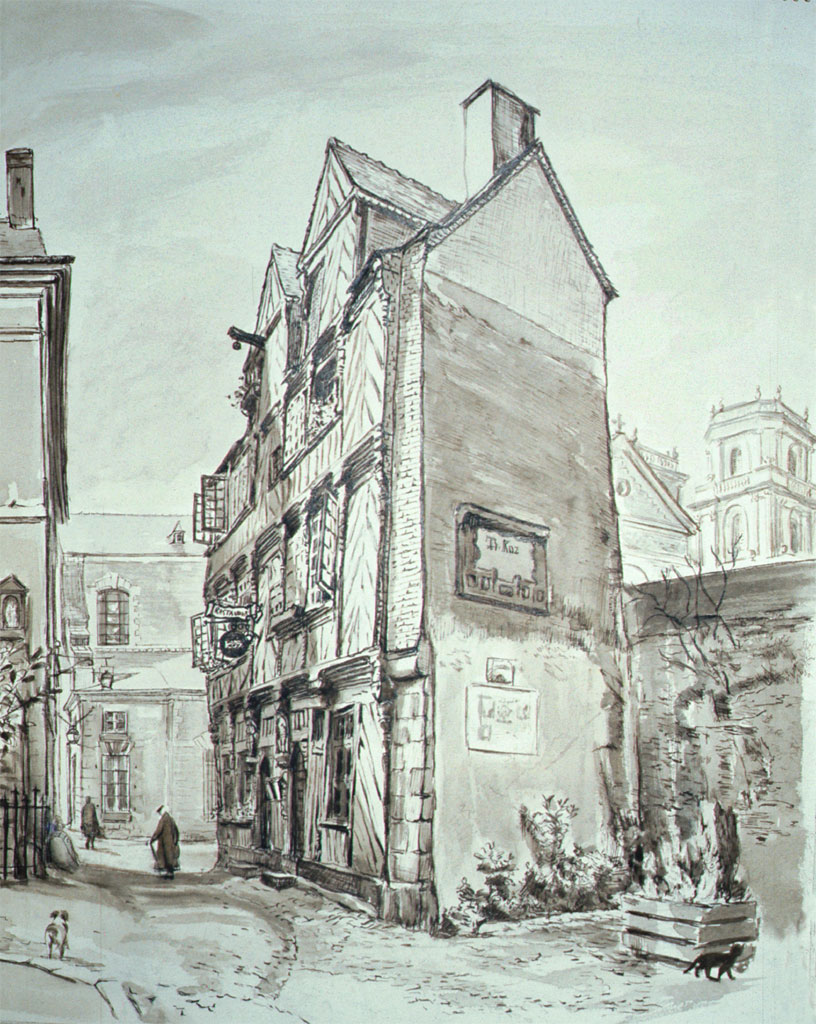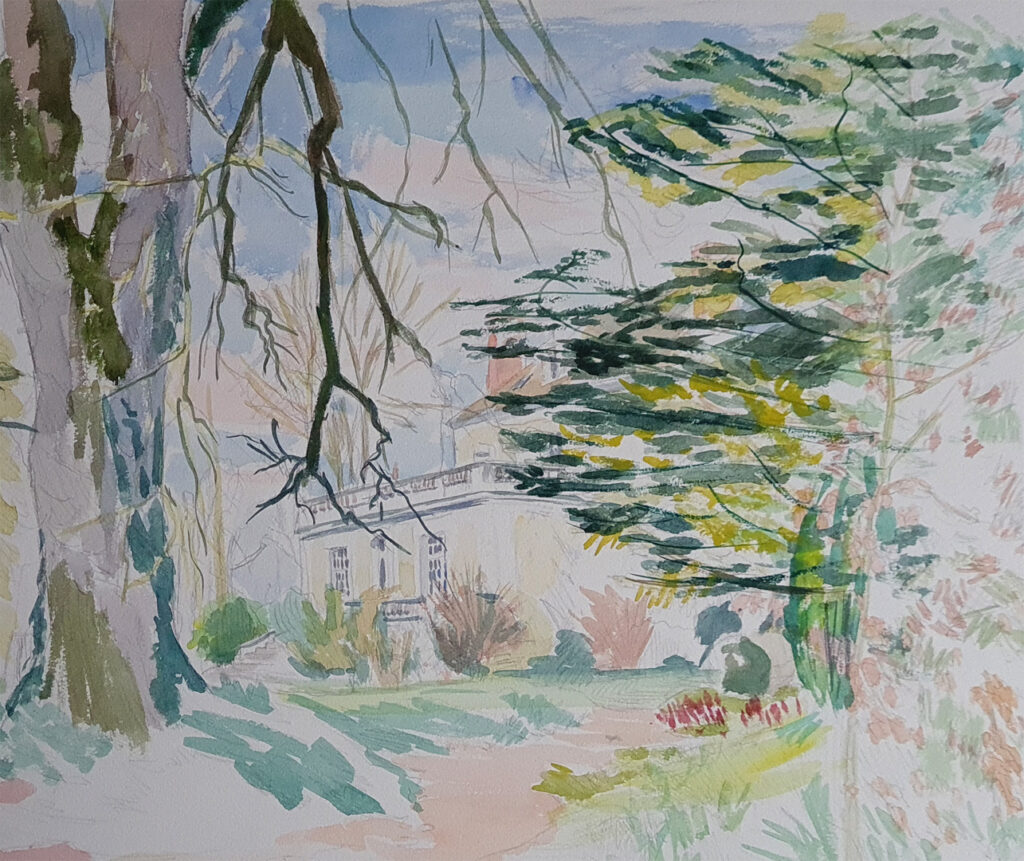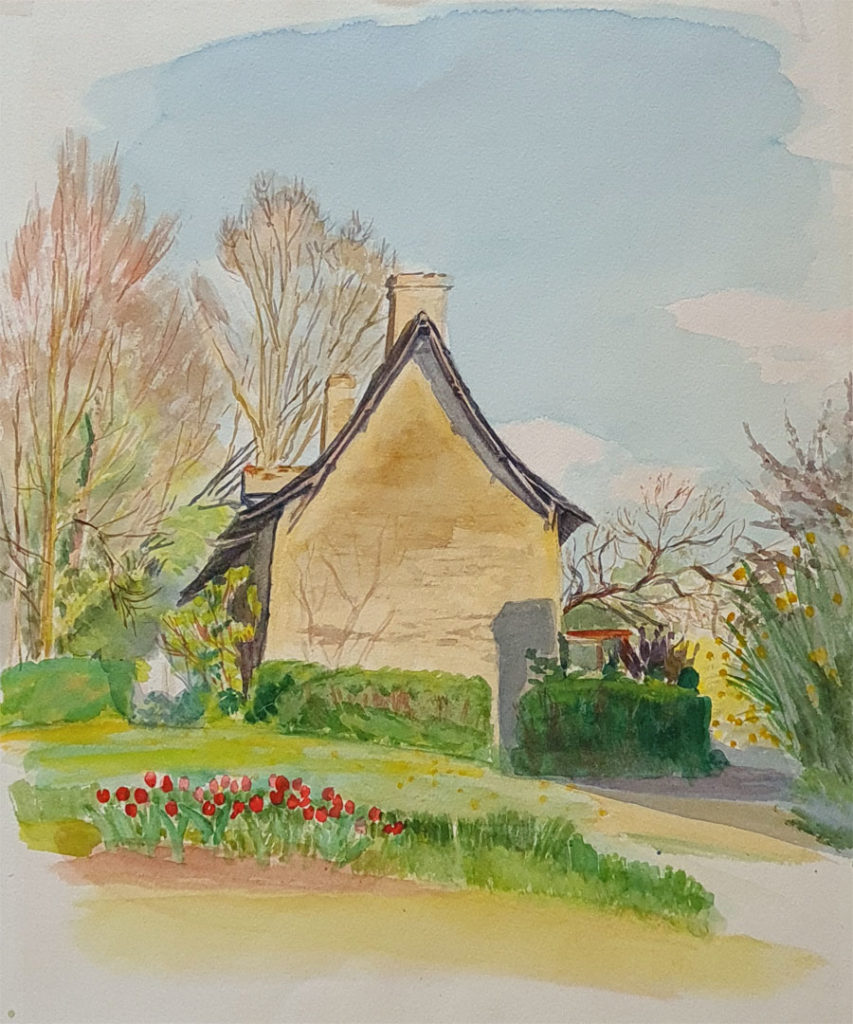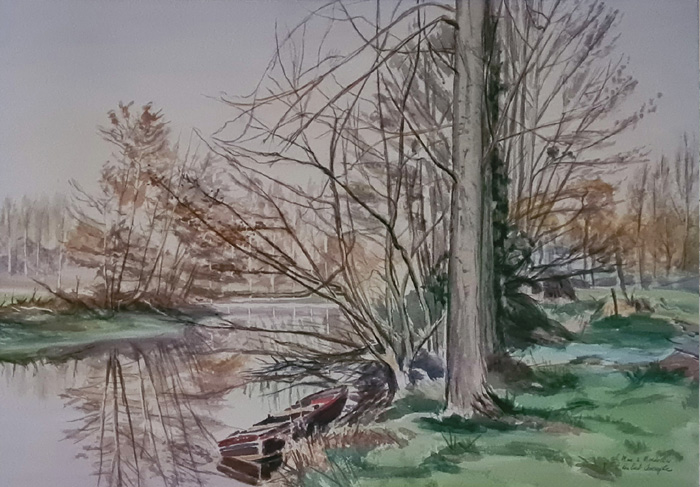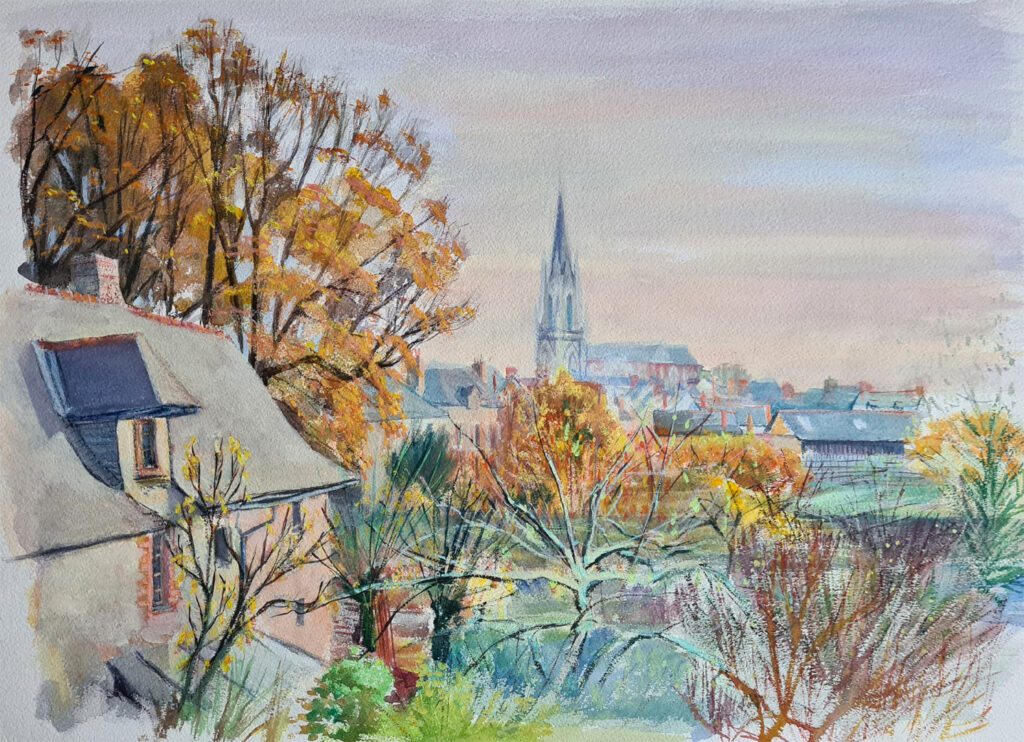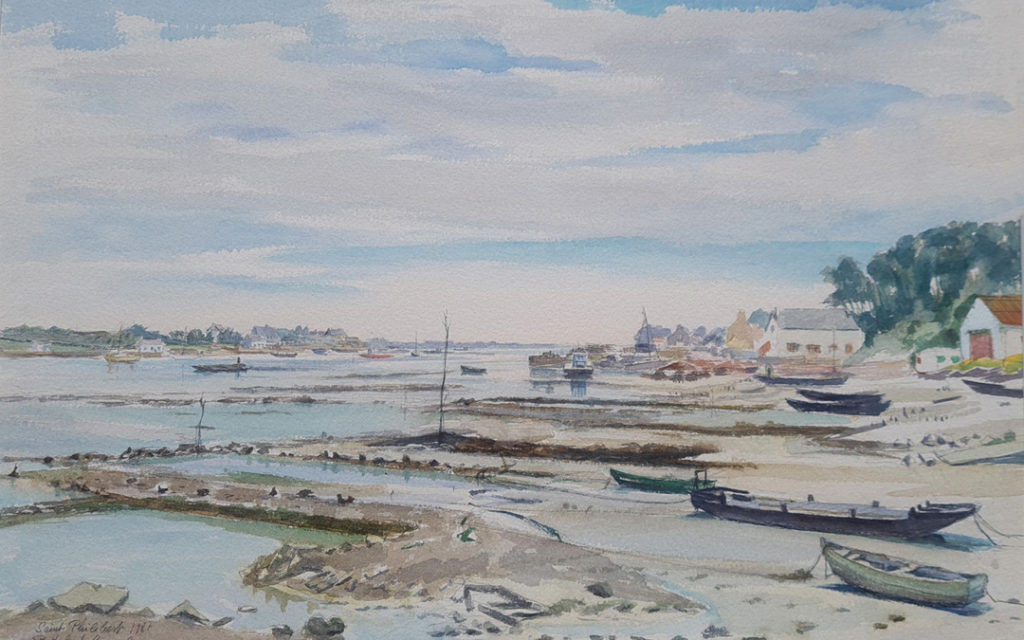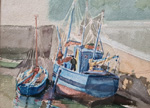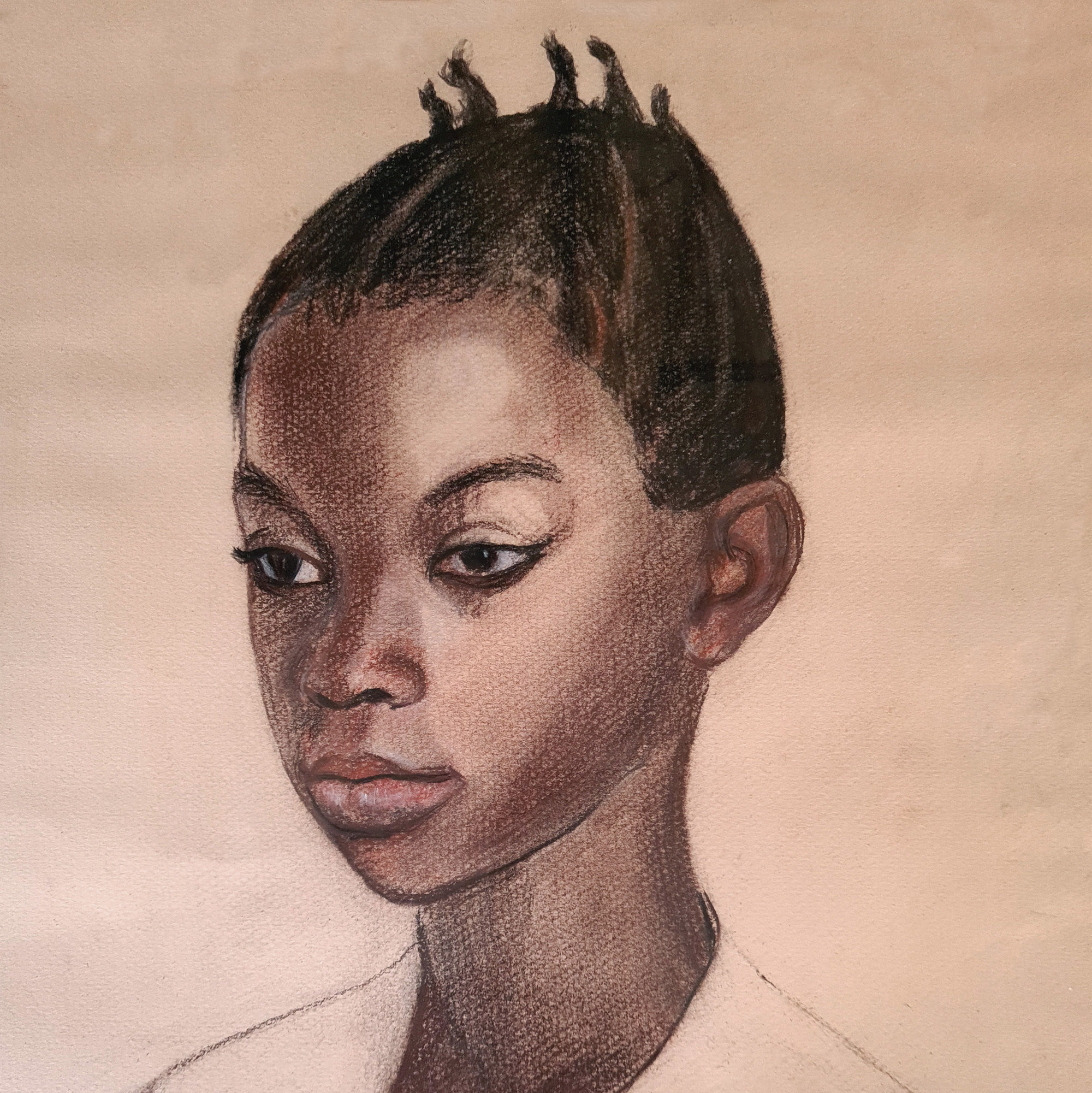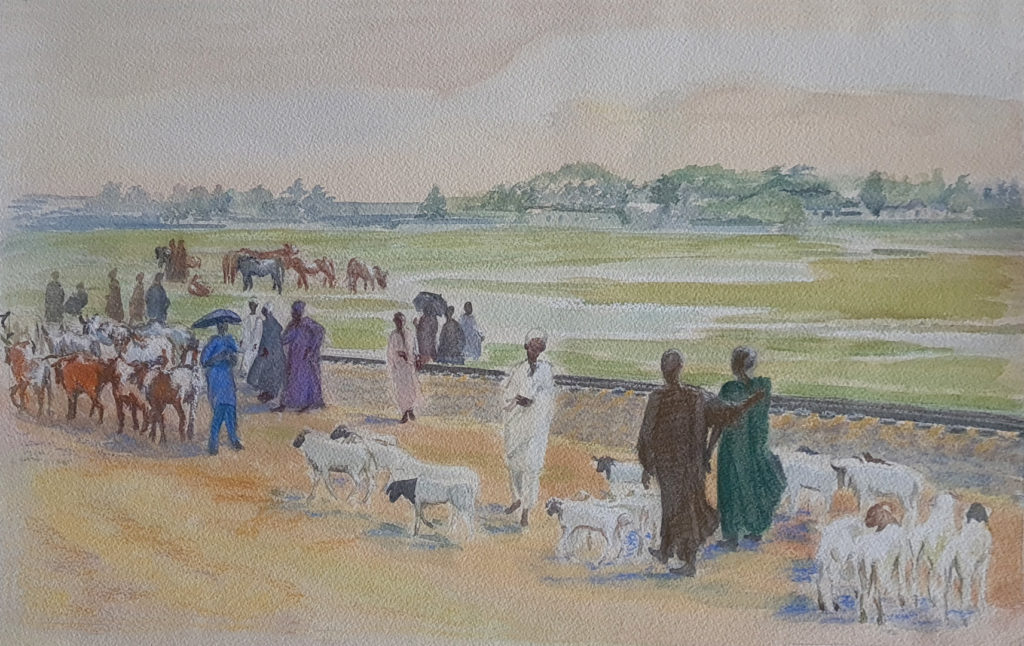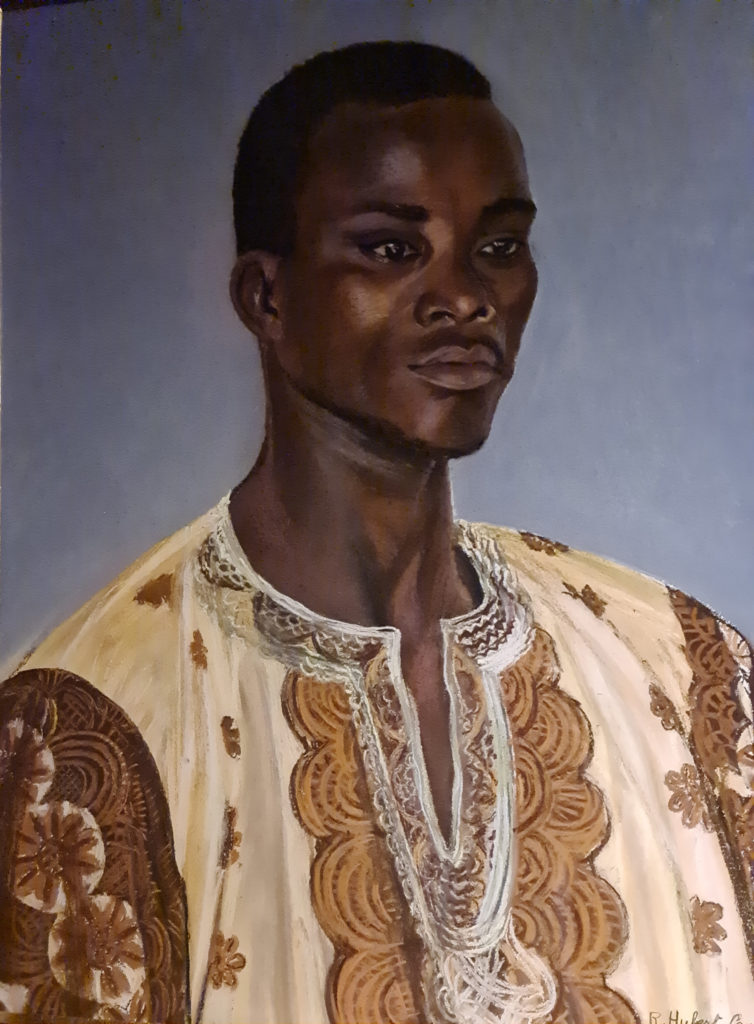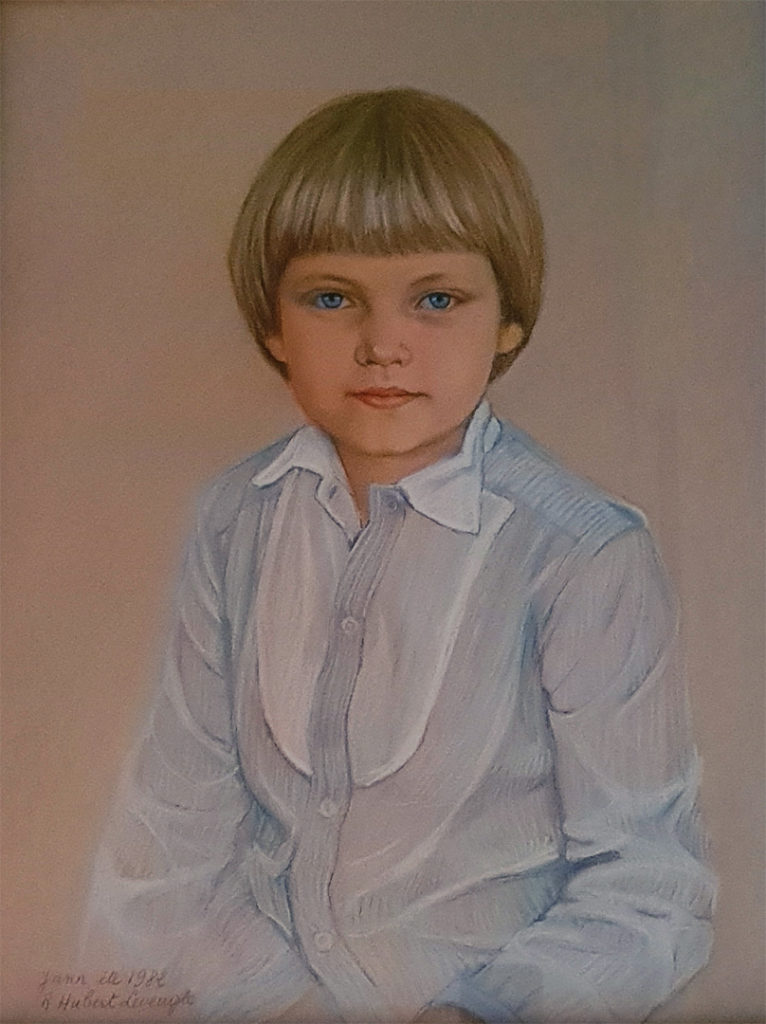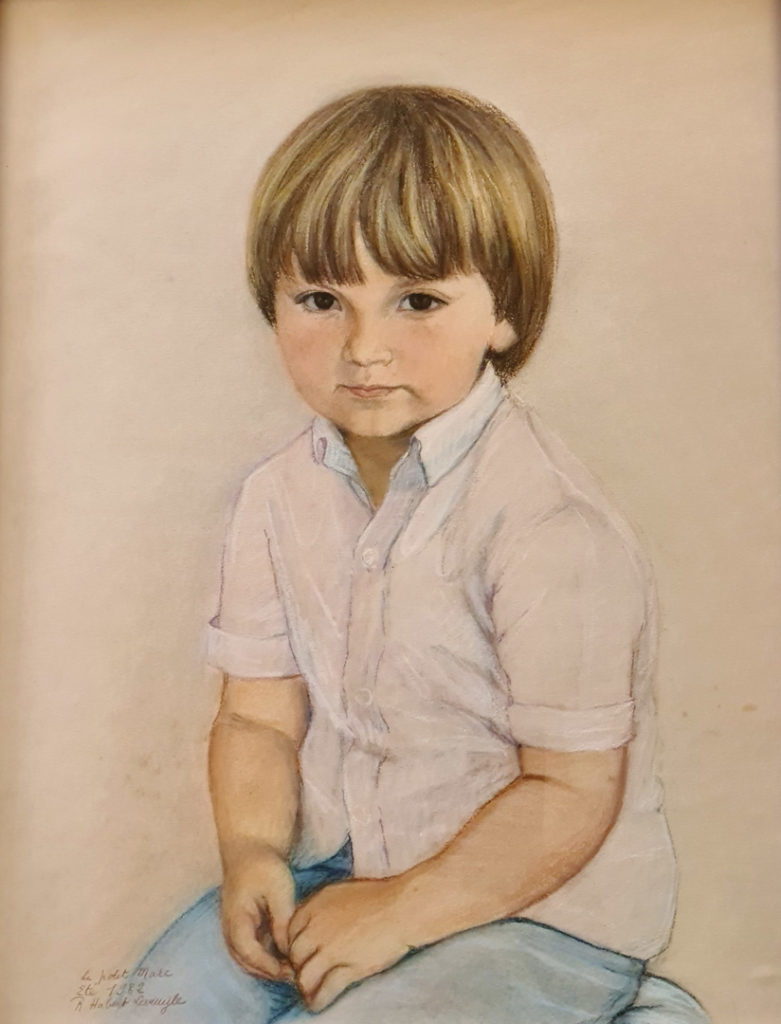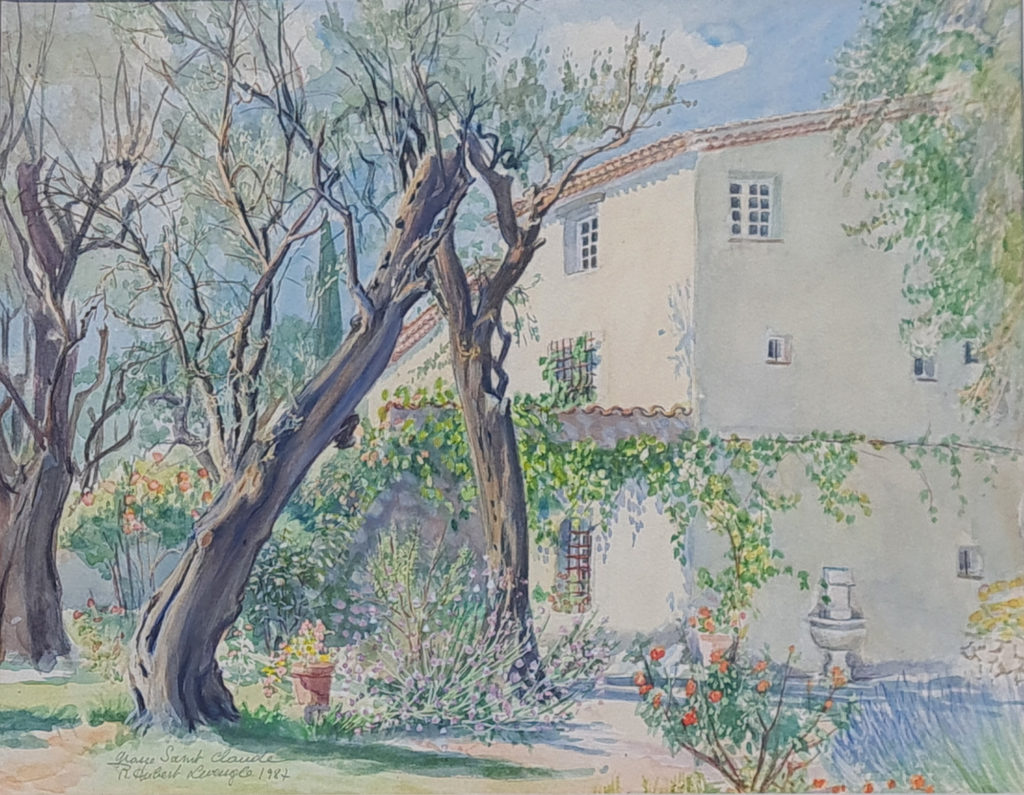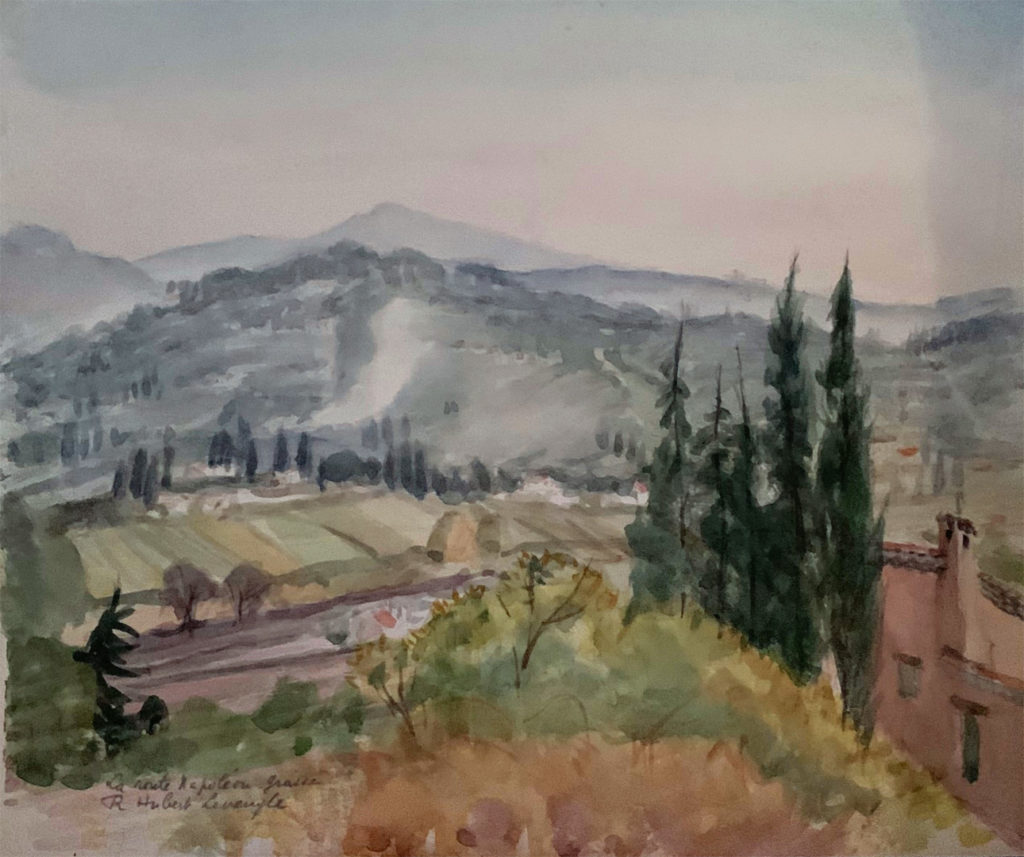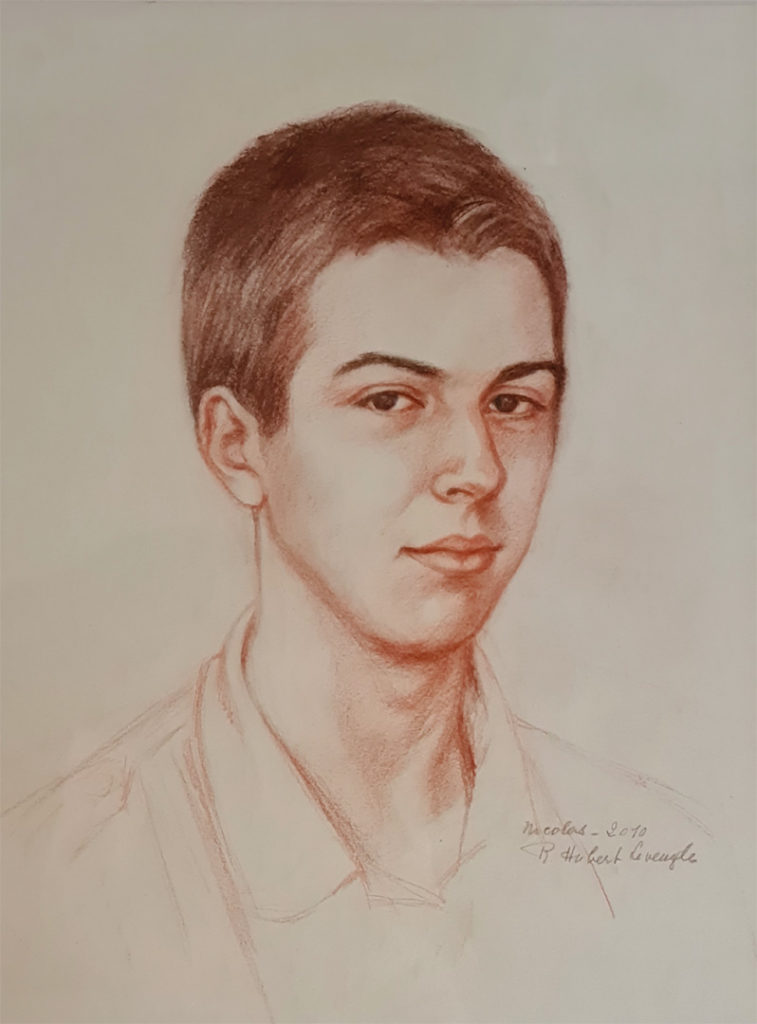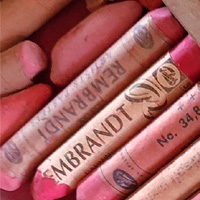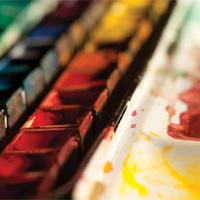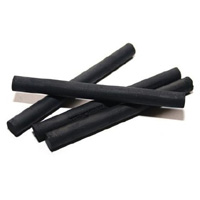
Biography
The young years
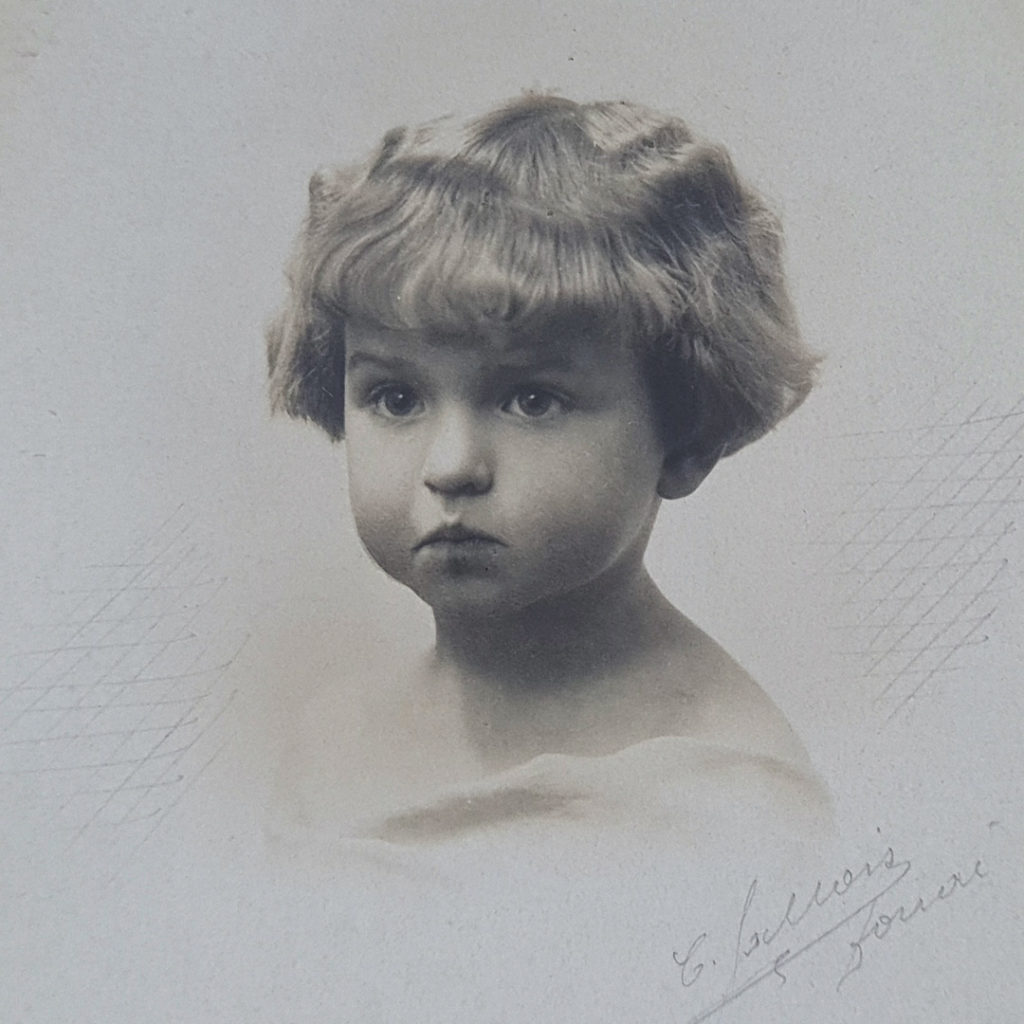
Rolande Hubert-Leveugle was born in February 1924 in Douai in the Hauts-de-France. She is a “de ch’Nord” girl,as she likes to say.
Her mother, Agnès Leveugle, runs a sewing school in Bellain street, Her father, Oscar Leveugle, born of Belgian parents, chose French nationality in 1927. He manages a workshop of pleater, embroiderer and runs a workshop specializing in haberdashery items, he is also an amateur painter in his spare time.
The couple has 3 children: Yolande the elder, then Rolande and Roland the younger.
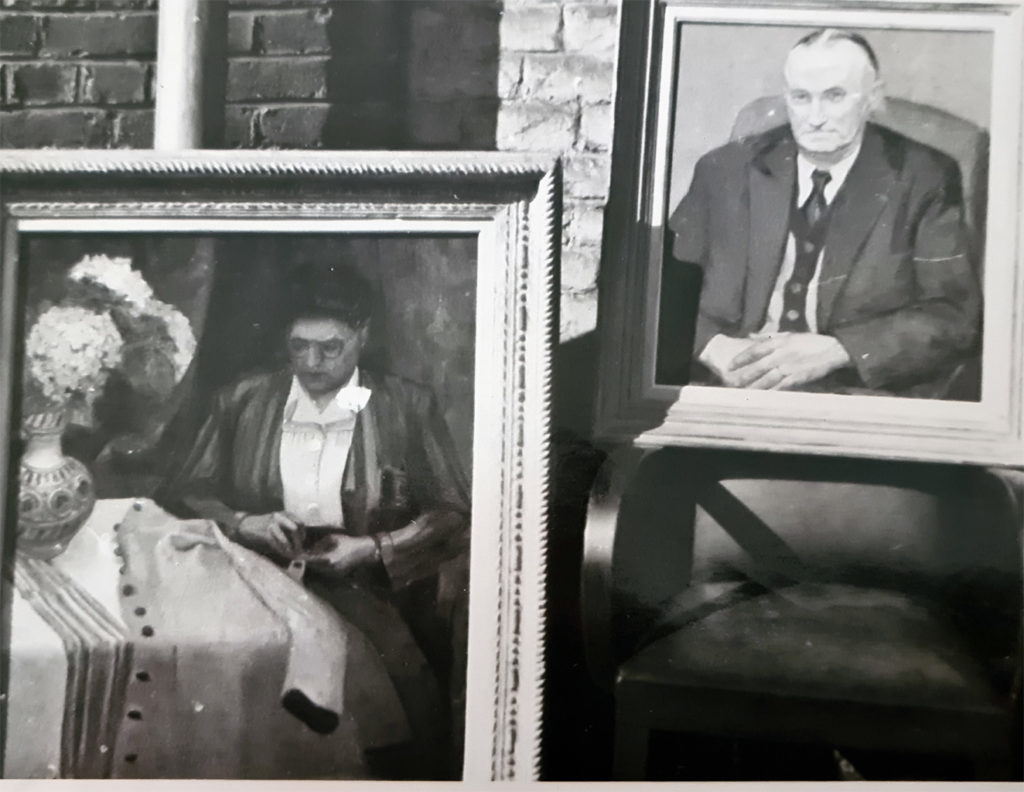
Douai is a typical northern French city with a rich architectural heritage. Rolande lives in the heart of the city not far from the emblematic belfry of the Town Hall.
She quickly showed a keen interest in artistic disciplines. Musical practice, heir to a rich tradition in the North, is part of her daily life. She enrolled at the conservatory, where she learned the violin and acquired a solid musical culture.
She began her studies in painting, architecture and sculpture at the Ecole des Beaux-Arts in Douai in 1940. It is a renowned school that prepares students for entry into the Ecole Supérieure des Beaux-Arts in Paris.
Work by Maurice Lemoy, Rolande Hubert leveugle’s teacher at the Beaux-Arts de Douai.
Gouache on paper (50×33) – representing the rue de la Mairie under the snow with the imposing belfry, an architectural jewel of the Middle Ages, famous for its carillon.
This work was given by Mr. Lemoy to the Leveugle family.
The most famous painter who painted this same view of the Douai belfry is Jean-Baptiste-Camille Corot. (Louvre Museum).
Oil portraits of Oscar and Agnes Leveugle painted by their daughter..
Oscar is a pleasant character. He loves humor and jokes. He shares with Rolande a love for painting. It is not uncommon to see the father and daughter painting on the ground around Douai.
During the Second World War, he joined the Resistance and at the liberation he became deputy mayor of Douai.
Agnès is a masterful woman with a strong character. She instilled in her children rigor, respect for others and love of a job well done.

Life in Paris
Winner of several painting prizes, Rolande Hubert-Leveugle obtained a scholarship to continue her studies in Paris..
In 1942, at the age of 18, in the middle of the world war, she left Douai for Paris. She attended both the National School of Decorative Arts and the Beaux-Arts de Paris, in the studio of Jean Dupas, a French painter, poster artist and decorator, who won the Prix de Rome in 1910.
She moved into a studio at 11 rue Daguerre. Times were hard, made up of restrictions and deprivation, but it was a real village life that she found in this Parisian neighborhood where mutual aid and solidarity were the rule.
She met a musician, André Hubert, who had come, like her, to study in Paris. He was a bassoonist and attended classes at the Paris Conservatory, where he obtained a first prize.
.
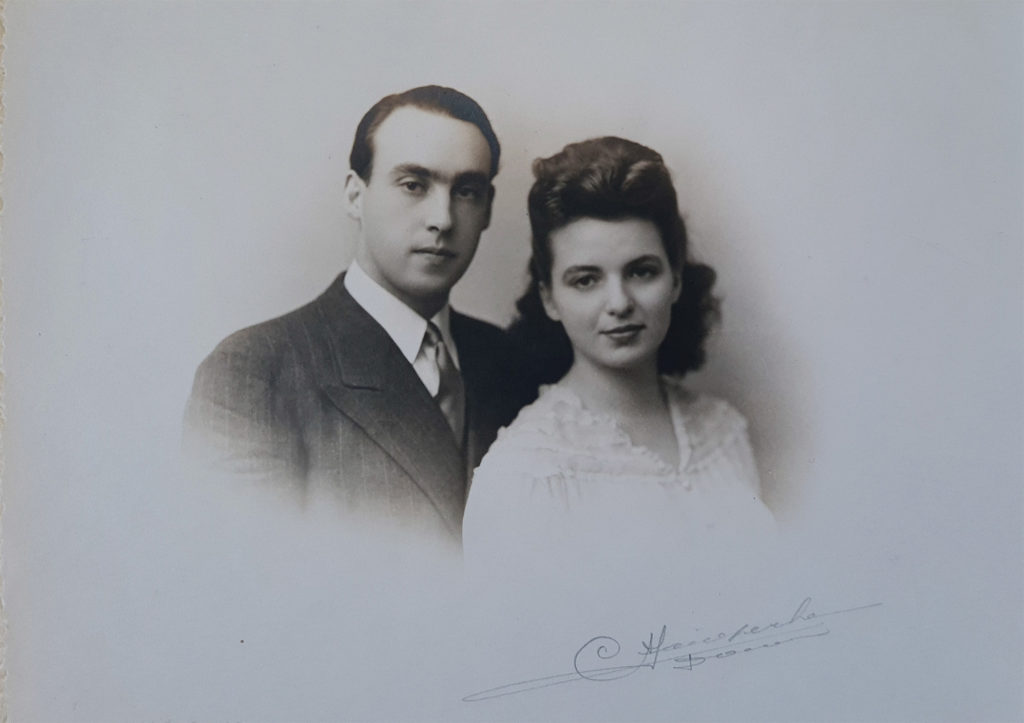
In 1944, the couple got married and moved into the studio on rue Daguerre.
It is the life of bohemia, surrounded by their friends musicians and painters of which André Brageu, Liao Xinxue, Henry Lheureux, Louis-Paul Robin, Madeleine Aimé, Georges Hugot, Robert Bouquillon (childhood friend of R.H.L.), Pierre-Michel Le Comte (bassoonist at the time before becoming a conductor) …
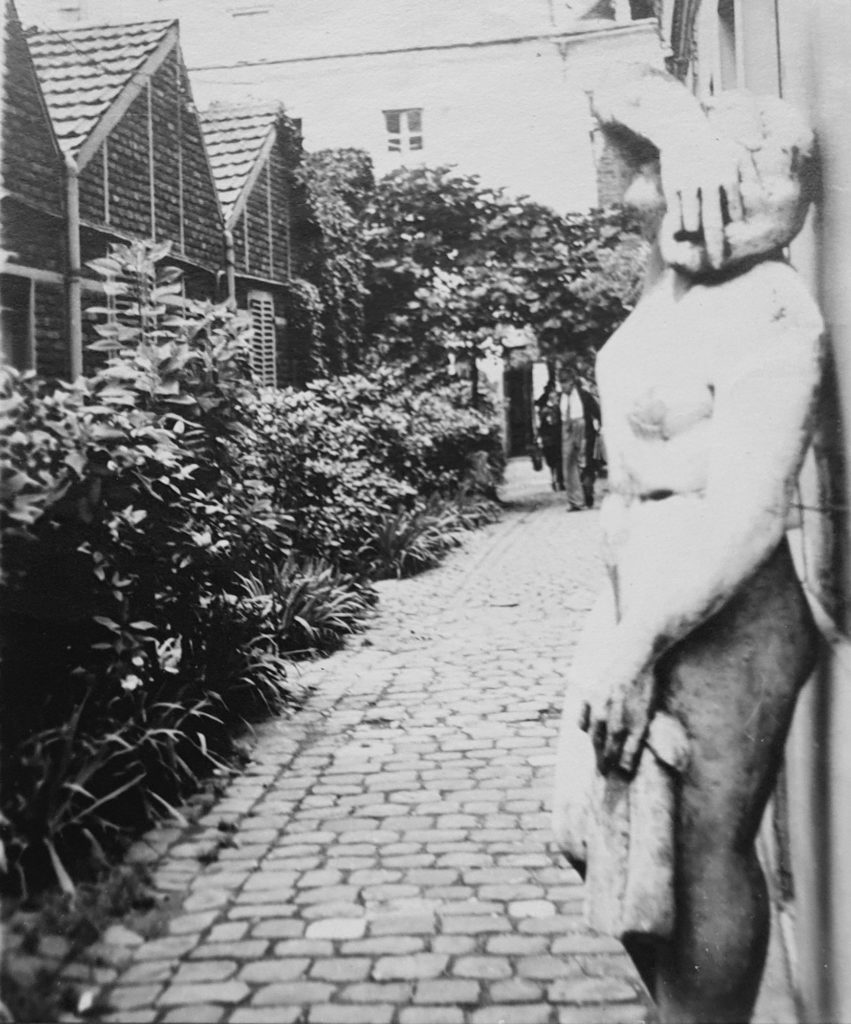
At the end of the war, it was difficult to make a living from her art, especially since the family was growing.
Rolande Hubert-Leveugle specialized, with her husband, in decoration.
They opened a store at 89 rue Monge in the 5th arrondissement of Paris.


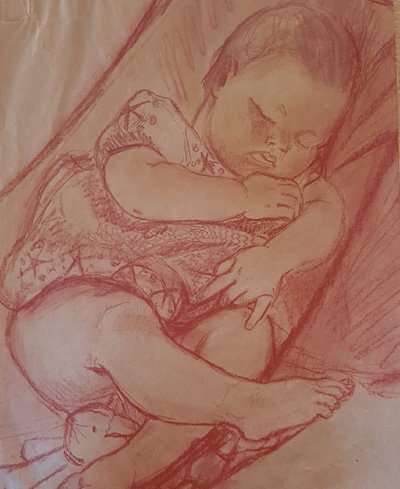
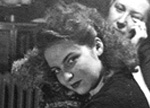
The Rennes countryside
In 1960, Rolande Hubert-Leveugle left Paris and settled in “Le Petit Thorigné”, in the family home of her husband, south-east of Rennes.
She has set up a painting studio which is also used for rehearsals of the Ars Juvénis chamber orchestra, of which she is a member with musicians from Rennes. Choral singing is another aspect of her passion for music. She was very involved in the association of the choir of Rennes Cathedral, until its dissolution.
She divides her time between her artistic activities and the decoration store that her husband has opened, rue de la Monnaie in Rennes.
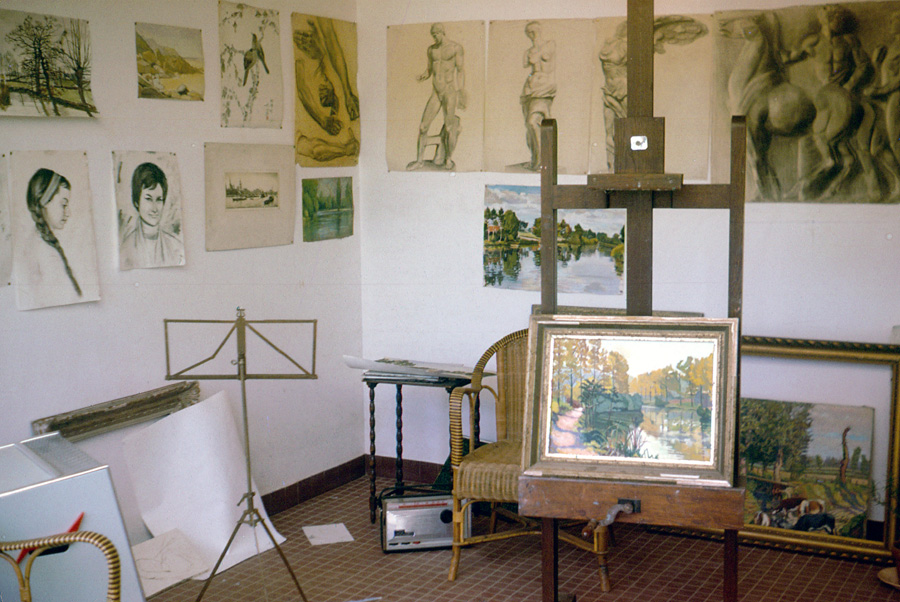
The beautiful houses, the bucolic landscapes around Le Petit Thorigné and Rennes, the bay of Cancale where she spends her vacations are her favorite places to put her easel. At that time, she painted mainly in oil.
RHL does not yet know that his paintings will become, for future generations, true iconographic documents.
Indeed, in the 1960s, the south of Rennes was mainly occupied by fields, orchards, hamlets, farms, a few manors and rural houses along the road.
The house of Le Petit Thorigné was part of the “village” or rather “hamlet” of Thorigné (Torigné) where several families lived, including the Louâpre family who owned a large farm for the time (22 ha).
In a few years, this peasant world will disappear in a brutal and definitive way to leave place to the Zup Sud which corresponds nowadays to the district of Blosne.
Mayor Henri Fréville was the fervent promoter of this large-scale urban expansion operation motivated by the city’s demographic pressure.
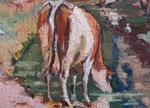
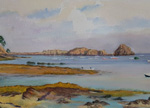
Rennes city of heart
As soon as she arrived in Rennes, the historic center of the Breton capital became for Rolande Hubert-Leveugle a source of inspiration that she never tired of representing.
She paints, on the motif, the famous marché des Lices, the small emblematic squares, full of character, the half-timbered houses of Old Rennes. But it is above all the atmosphere of the city, sometimes full of life, sometimes calm and peaceful that she takes pleasure in retranscribing in her watercolors.
Her works have been exhibited many times at the Desgranges gallery and the “Beaux-Arts” gallery which were located on the rue de Toulouse and the place de la Mairie in Rennes.
In September 1967, R.H.L. was one of the painters from Rennes invited by the Mayor of Louvain in Belgium, to participate in a group exhibition at the Museum of Fine Arts in Louvain. This exhibition was organized following the exhibition of contemporary Louvain painters at the Palais Saint-Georges in Rennes in July 1967.
Extract from an article by Rennes journalist Jean-Jacques Durocher

“If you sometimes go shopping on Saturday mornings at the Lices market or just stroll around the old town of Rennes, you may have seen a tall blonde woman with a soft dreamy look, planting her easel at the edge of a sidewalk and starting to paint the market scene or the half-timbered facades of 15th or 16th century houses..
This painter from Rennes, in love with the past, is Mrs Rolande Hubert-Leveugle..
She paints with gouache, or draws with tempera and grease pencil enhanced with white to better catch the light, the rue des Innocents, the rue Saint-Sauveur and the rue des Dames, the place du Champ Jacquet or the Portes Mordelaises, the large half-timbered houses restored in a courtyard of the rue Motte-Fablet, all these witnesses of a quiet past that we dream of…”
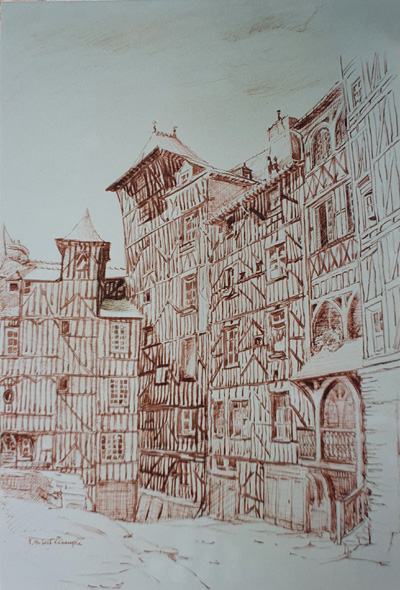
The evolution of the rue Saint-Guillaume illustrated by Rolande Hubert Leveugle
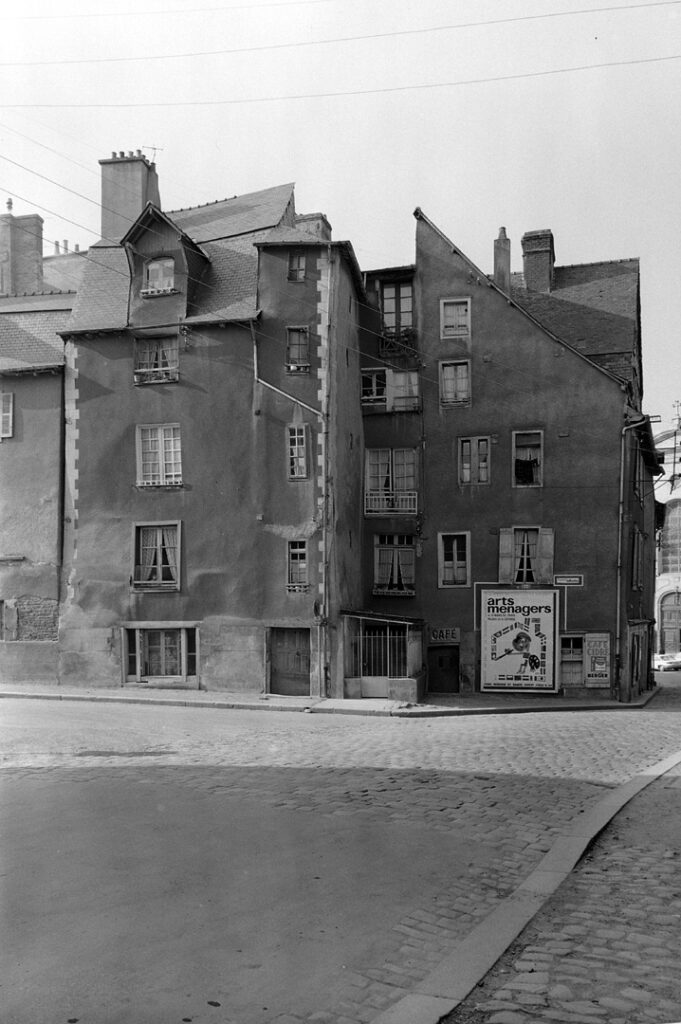
Rennes – IVR53_19653500035V
©General inventory (Brittany), Dagorn François
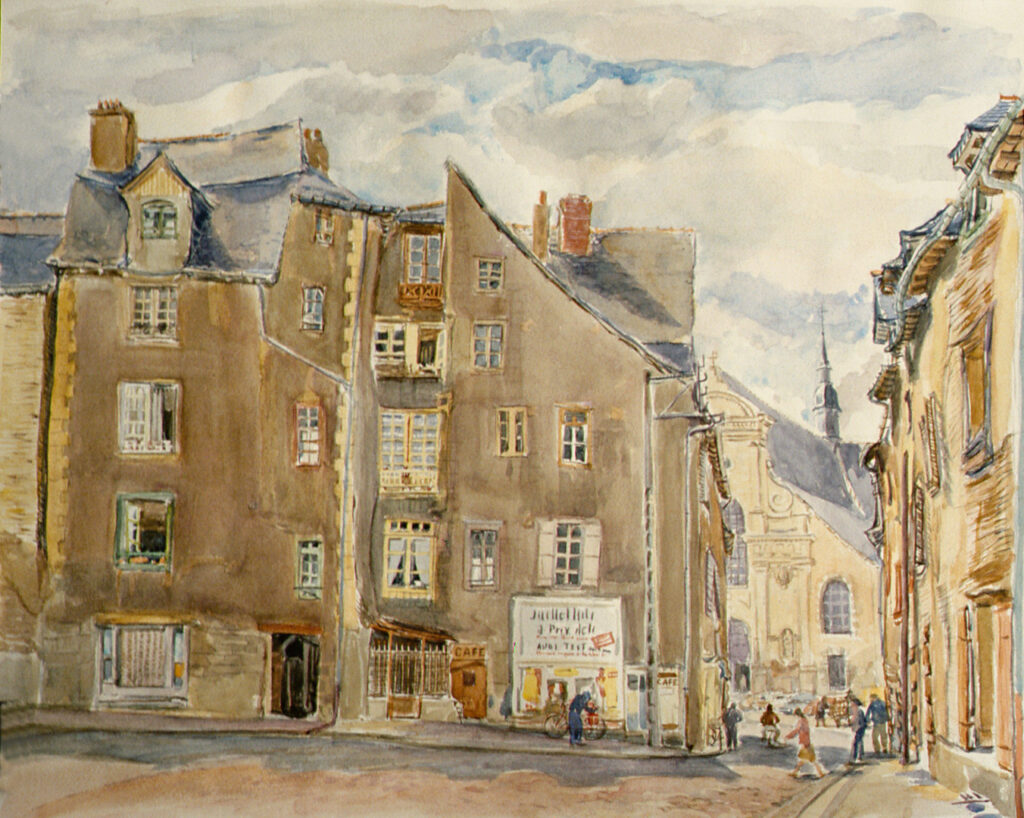
Building of the 17th century.
In the background the Saint-Etienne church
The Mordelles period
In 1968, following the expropriation of Petit Thorigné, the artist moved to “Le Pressoir” in Mordelles, a town located about fifteen kilometers from Rennes. This beautiful property has direct access to the banks of the river Meu. It is the ideal place for Rolande Hubert-Leveugle who, throughout the seasons, represents her vision of the evolution of the landscape.
She abandons decoration to devote herself fully to painting and music.
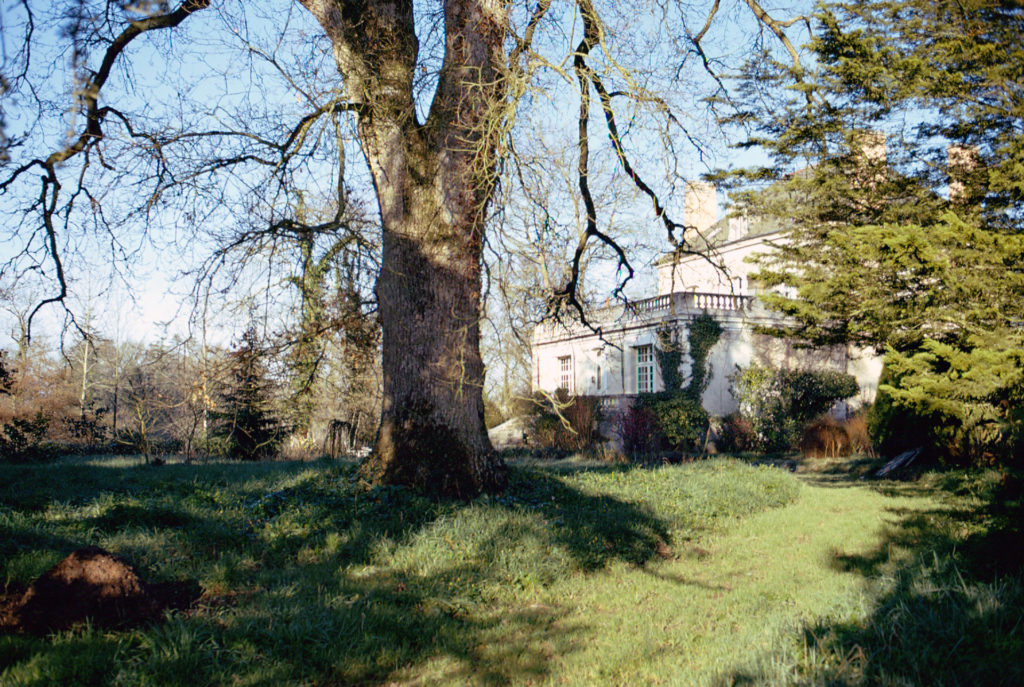
During this prolific period, she also realized many seascapes in Brittany in the Gulf of Morbihan, a territory she particularly likes.
She also took advantage of her travels in France and abroad to prepare exhibitions.
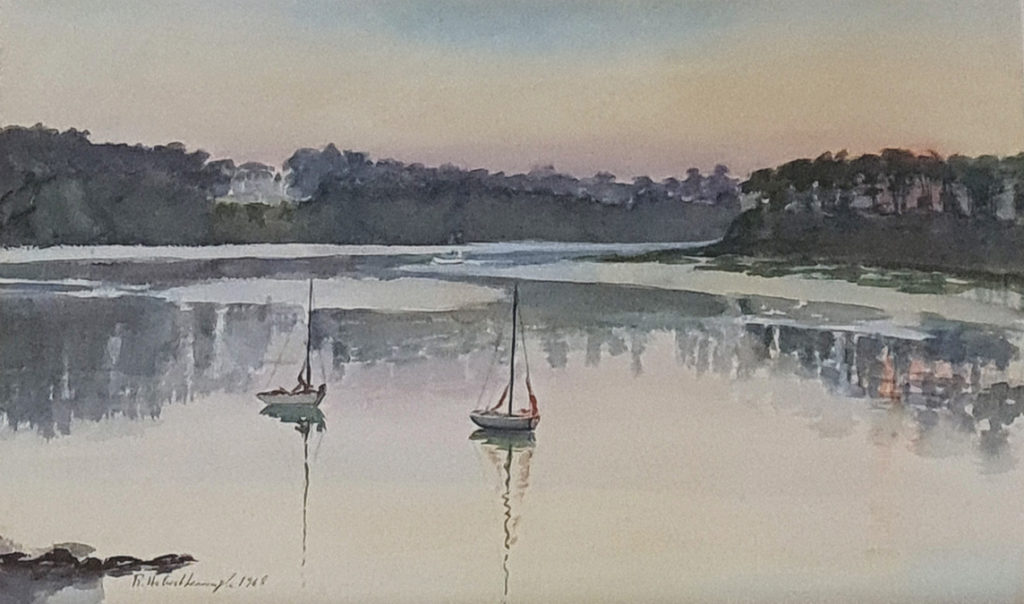
The African escapade
In 1973 Rolande Hubert-Leveugle visited the Ivory Coast and exhibited portraits and watercolors at the Alliance Française in Abidjan, including a series of watercolors painted on site. This exhibition was a great success.

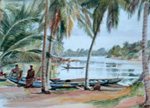
The return to Rennes
In 1976, Rolande Hubert-Leveugle and her husband fell under the spell of an old ruined house of character, located on the outskirts of Rennes.
They started restoring the property, which had a large walled garden.
The couple devoted a lot of time and energy to the project. The house became the home of large family celebrations and informal meals with friends.
Rolande Hubert Leveugle’s reputation as a portraitist grew. She received many commissions and specialized in children’s portraits executed in pastel, a technique she mastered to perfection.
A large painting studio was set up on the second floor of the house. She received her models there..


Rolande Hubert-Leveugle continues to exhibit
- 1976 – Salon of women painters and sculptors at the Musée du Luxembourg in Paris
- 1976 – Vallombreuse Gallery in Biarritz and Palm-Beach
- 1976 and 77 – Town Hall of Tréguier
- 1980 – Gallery of Fine Arts in Rennes
- 1989 – City Hall of Saint James, Saint-Aubin du Harcouët and Saint-Aubin du Cormier
- 1991 – Participation in the international exhibition of watercolors in Trégastel (the exhibition no longer exists since 2005)
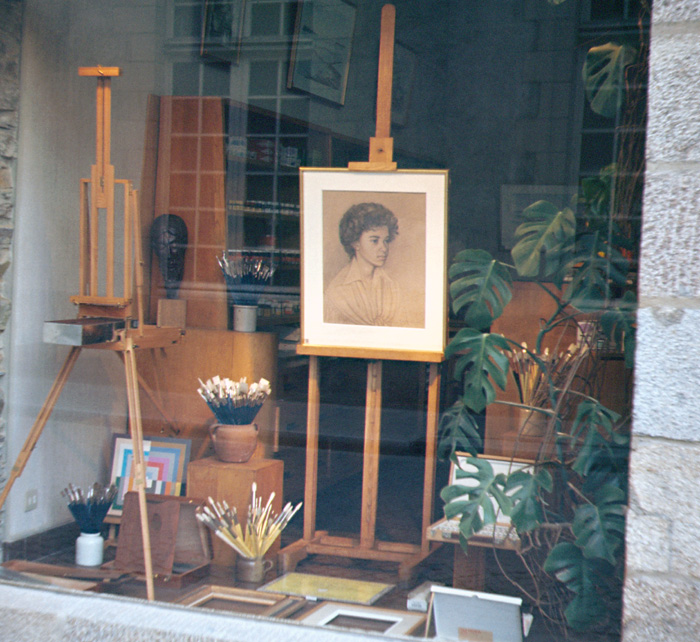

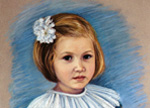
In the painters’ footsteps of Grasse
In the 1980s, R.H.L. discovered the French Riviera. Like her illustrious predecessors, she fell under the spell of the Grasse region where she produced a series of very colorful watercolors whose style contrasts with her Breton seascapes.
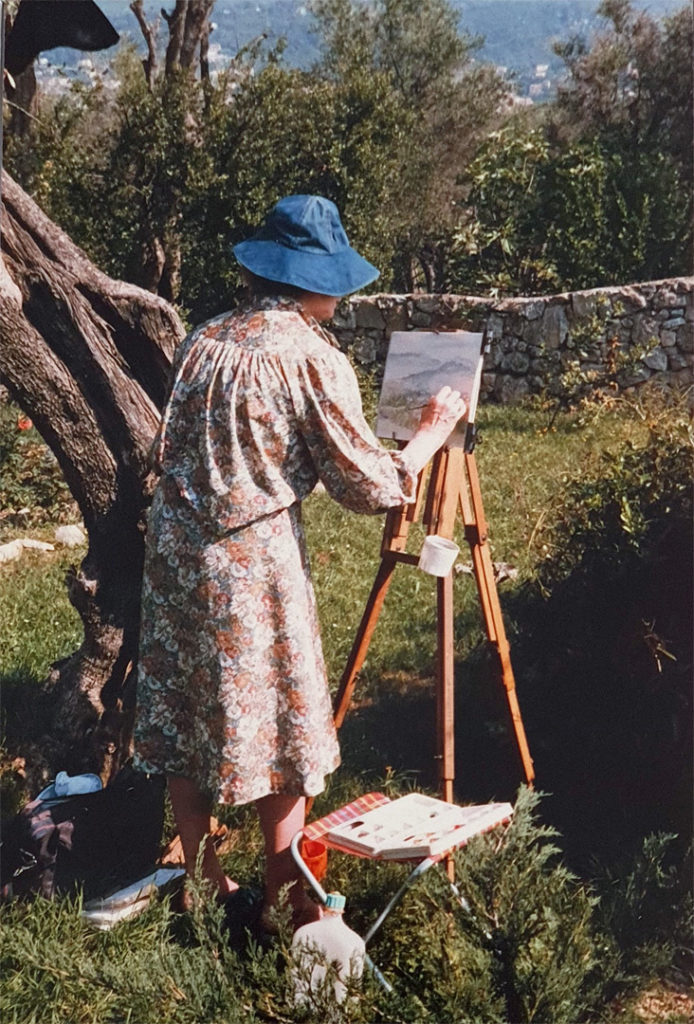
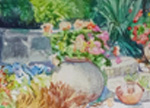
Resilience
In 2004, the death of her husband, after almost 60 years together, is for R.H.L. a painful ordeal that she courageously takes up.
She made it a point of honor to take care of the house and gather her family for festive meals. Her sketchbook is never far away and she continues to make portraits of her grandchildren or models.
At 98 years old, she was always enjoying her old age in this house in Rennes, surrounded by her family and her paintings. Rolande passed away on 15 June 2022
